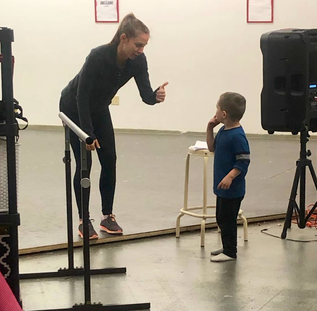 Tradition. Passion. Dedication. Welcome to Scoil Rince Luimni, also known as SRL Irish Dance Academy! We’re a small, independently-owned Irish dance studio located in South Windsor, Connecticut and we’re so happy you’re here. A little about us: SRL was founded in 2014 by Courtney Jay, TCRG after she finished her BA in Irish Music and Dance at the University of Limerick. (In fact, that’s why we’re SRL—in Irish Gaelic Scoil (scull) is school, Rince (ring-ka) is dance, and Luimni (lim-nee) is Limerick!) Miss Courtney, as the dancers call her, has been an Irish dancer her whole life and has been teaching and mentoring younger dancers since she was 13. During her time in Limerick, Courtney trained at the Fleming-Ball School of Irish Dance, where she danced her way to 2 solo world medals, regional titles in solo and team championships, and top 10 at every international major competition. Before leaving Ireland, Courtney was certified by the CLRG (the largest and oldest governing body of Irish dance in the world) and then came home to Connecticut to create SRL! 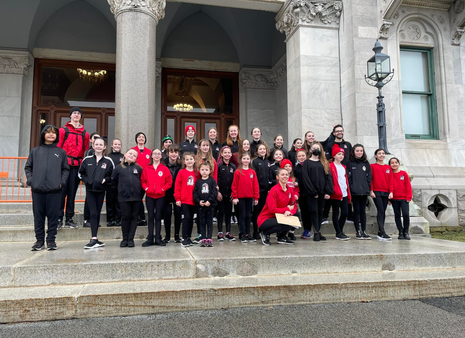 8 years later and SRL is a tight-knit community that instructs in the storied tradition of Irish dance for those as young as 2-years-old (check out Tiny Jig to learn more!) into adulthood (check out SRL After Dark to learn more!) We take this highly athletic and artistic sport and apply our modern, paced approach to training that helps our dancers find their own, personal goals—whether that be recreation, casual performances, or the competitive track. In this supportive environment, we focus on the whole dancer: technique and whole-body conditioning to be sure, but also the promotion of healthy life skills (such as setting and achieving goals, teamwork, focus, and dedication.) In line with that, SRL offers mentoring opportunities at every turn—from class helpers to buddies at dancers’ first competitions and performances—and cultivates a spirit of support and community that’s really what Irish dance is all about! Our small, but passionate staff is ready to help guide and encourage your dancer—whether they be just starting out or qualifying for Worlds—through structured lessons that optimize their opportunities to grow both as dancers and as people. While Irish dance has a long tradition (read more about its origins here!) and strong ties to Ireland’s national identity, you don’t need to be Irish to do Irish dance. As the Irish diaspora has spread across the world, Irish dance has become more than a traditional art form (though it retains those roots and music)—it’s a global community. All you need to join in is passion, dedication, and someone to teach you—and we’d love to help out! 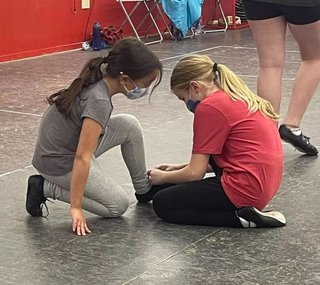 SRL is registered with the CLRG, the Irish Dance Teachers of North America, and the New England Irish Dance Teachers. Classes run on a school year schedule from September to June--sign up now for a trial class to lock in your preferred class time, or take a look at our 4-week taster sessions to really get a feel for it before signing up for the year! Please feel free to reach out to our Office Manager at [email protected] with any questions. They’re happy to help! This post is part of a series. Take a look at our last 411 post, all dancer testimonials, here. Also: check out the blog every Monday and Thursday for more posts about Irish history, dance culture, community news, and spotlights on our dancers, staff, and families—among other fun projects! And don’t forget to dance along with us on both Facebook and Instagram.
0 Comments
Amazing Women in Irish History, Part 4 Missed the first parts? Check them out: Part 1, Part 2, and Part 3! Here we are, at part 4 of 4 of our series all about the incredible women in Irish history (and into modern day!) However, this is hardly the end of the list in real life. If you or your dancer are interested in learning more about the amazing, groundbreaking women Ireland has produced, check out one of these lists of books that all explore the topic. But for now, drumroll please, as we bring you our last 4 revolutionary women: Countess Constance Markievicz: Ireland’s First Female MP and Revolutionary 1868-1927 “But while Ireland is not free I remain a rebel, unconverted and unconvertible.” While technically born in England, Markievicz’s family has Irish ancestry and always owned land in County Sligo—and it was Ireland where she eventually made her home. Never comfortable in the society life she was born into, she escaped to Paris to become an artist and met her husband, the Polish Count. Together, they settled in Dublin where Markievicz founded (along with future Irish President, Douglas Hyde) the United Arts Club, the goal of which was to preserve Irish culture and lift up modern Irish writers and artists. Her aims soon turned political—by 1908 she was a known proponent for Women’s Rights and during the 1913 Lockout she sold her jewels to help feed protestors. All this revolutionary action led to her being at the forefront of the 1916 Rising—and a death sentence (she was granted mercy due to her gender, the notion of which she found ridiculous.) When released, she used her second chance at life to continue to support Irish Independence by becoming the first female MP in Ireland’s first government, and later serving as the Minister of Finance (making her one of the first women in the world to hold a cabinet position—and the only women in Ireland until 1979.) By the time of her death at the age of 59, she was penniless (despite having just won reelection,)—having given all her wealth to the poor of the country she fought for until her last breath. Sinéad Burke: Writer, Designer, and Disability Activist 1990-present “Disability is articulated as a struggle, an unnecessary burden that one must overcome to the soundtrack of a string crescendo. But disabled lives are multi-faceted—brimming with personality, pride, ambition, love, empathy, and wit.” With Sinéad Burke we’ve officially come to the youngest woman on this list, but her relatively young age hasn’t stopped her from making her mark. Born with achondroplasia (a genetic condition that affects bone growth) in Dublin, Burke started using her voice for good at just 16-years-old, when she created a blog that discussed exclusivity in the fashion industry. At 3 feet, 5 inches tall, Burke works tirelessly to open the conversation in the design community (in clothing and beyond) to better include people of all sizes and those with disabilities. Her work hasn’t gone unnoticed—Burke visited the White House at President Obama’s invitation, won the 2012 Alternative Miss Ireland, has given a TED talk, was the first person of her stature to attend the MET Gala in 2019, and has been featured in British Vogue—among numerous other honors. Additionally, Burke serves as an Ambassador for the Irish Society for the Prevention of Cruelty to Children and the Irish Girl Guides, as well as Council of State for the Irish President. Her first book, Break the Mould (a best-selling children’s book that teaches lessons about celebrating peoples’ differences,) was released in 2020, and her hit podcast (As Me with Sinéad) has been running since 2019 (with an impressive list of celebrity guests,) discussing each guest’s life to challenge biases. Dr. Dorothy Price: Physician and Vaccination Advocate 1890-1954 “[I]n the last few years the political and professional position of women in the world has changed.” Dr. Dorothy Price lived an extraordinary life—after being born in Dublin she lived through both World Wars, the Spanish Influenza pandemic, the 1916 Rising from the British side, and the formation of a new Irish state from the Irish side. And she was extraordinary as well—after beginning work in charitable social services and art, she pivoted to medicine at the age of 25 after reflecting on the death of her brother as a child from typhoid fever. Price then became instrumental wherever she went in the care for the sick through multiple waves of illness and the injured through multiple kinds of conflict. But Dr. Price’s most lasting mark came in the form of her vaccination advocacy. When she began her work at St. Ultan’s Hospital in Dublin in 1923, she was able to travel throughout Europe to research medical innovations to bring back to Ireland, including the tuberculin test to diagnose tuberculosis and the BCG vaccine to prevent it. Dr. Price threw herself into learning everything she could about tuberculosis and implementing these preventive measures throughout Ireland despite stiff political opposition—which saved at least tens of thousands of children from death (or at the very least, debilitating illness) and is now credited with ending the mid-20th century Irish tuberculosis epidemic, which had largely affected the young. Dr. Norah Patten: NASA Scientist and Future Astronaut
1987-present “I got a letter from a little girl recently and it meant so much to me. It included a picture of her in a rocket with me and the caption, 'Here's me and Norah going to space.' That's more than I could have ever asked for." Though one Irish man has technically been to space…it was on a private expedition that cost him upwards of $100,000, so we’re not counting it. In contrast, Dr. Norah Patten, a County Mayo born aeronautical engineer, STEM advocate, and NASA scientist, is currently on track to become the first Irish woman to go to space. Dr. Patten has been fascinated by space ever since she was a little girl and followed her dreams from the time she was 11-years-old: from school projects to begging to visit NASA multiple times, all the way to pursuing her degrees in Aeronautical Engineering and Aerodynamics (concurrent with a work study job at Boeing.) Once she graduated with her PhD, Dr. Patten continued her work in the field that led to her being one of only 12 people in the world chosen for the Polar Suborbital Science in the Upper Mesosphere project, where she’s done all the preparatory work to become a full-fledged astronaut. Outside of training to literally leave earth, Dr. Patten is big on community outreach and science communication, including her first children’s book Shooting for the Stars (all about her journey, the science of space, and encouraging other young women to pursue their passions.) All rebels in their own way, these women of Ireland represent the resilient and revolutionary spirit we’re so proud to cultivate in our own SRL dancers. We hope Irish dance, much like these amazing Irish women, encourages our dancers to work hard, dream big, and never give up on themselves. From world champ or astronaut to politician or artist—SRL dancers can do anything they aspire to! This post is part of a series. Read our last Irish history post, all about other amazing women in Irish history, here. Check out the blog every Monday and Thursday for more posts about Irish history, dance culture, community news, and spotlights on our dancers, staff, and families—among other fun projects! And don’t forget to dance along with us on both Facebook and Instagram.  Part 2 Interested in trying out Irish dance, but aren’t entirely sure? We could talk all day long about the benefits Irish dance has, physically, mentally, and socially (and we have—check out past 411 posts to learn more!) but why don’t we let some of our dancers tell you a little more about why they love Irish dance here at SRL! We hope you’ll join us! Looking for: far-reaching life skills? “Irish Dance trained me to have a very high stamina, physically and mentally. Courtney was the best at pushing her dancers towards their goals. I know how to work towards long term goal without being worn out, and to push through to the very end.”—Lindsey Looking for: competitive spirit? “My favorite thing about dance is the competition. I like that in Irish dance you can show off how much you've learned and progressed.”—Magnus 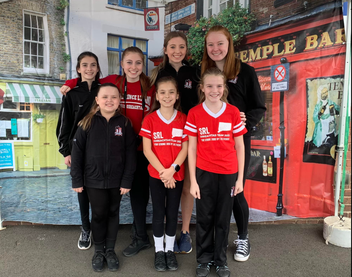 Looking for: enjoyment and self-expression? “When there are no words to explain how you feel, you express yourself through dance. I remember there would be nights when…I was tired, but when I walked through those studio doors I knew it was my time to work. And when I walked out of those doors at the end of the night, I felt like a better person.”—Lindsey Looking for: inspiration? “I look up to Courtney because she has given me a second home and something that I truly love.”—Ellie Looking for: friends? “Dance has given me the ability to have friends all around the world that share the same love and passion for Irish dance that I do.”—Christian 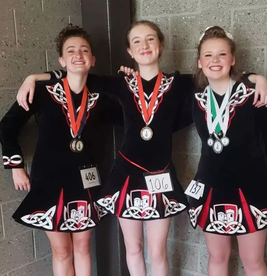 Looking for: somewhere to learn and grow? “Irish dance was a life changing experience that provided me with so many opportunities to learn and grow. It was a daily challenge, which inspires my work ethic today. I always aim high and dream big. Through Irish Dance, I learned by working hard and practicing my craft, I could achieve anything.”—Tara Looking for: something to be passionate about? Just take Tilly’s word for it: “I like Irish dance and you will too!” If your dancer is looking for it, SRL has it! While classes run on a school year schedule from September to June, we have a special offer to let new dancers get a taste before they sign up in the fall! SRL’s Intro to Irish Dance Summer Camp sign-ups are now open for new dancers 2-12, at work-friendly drop off times for parents. Learn more about the program here, or feel free to reach out to our Office Manager at [email protected]. They’re happy to help! This post is part of a series. Take a look at our last 411 post—tons of testimonials from parents!— here. Also: check out the blog every Monday and Thursday for more posts about Irish history, dance culture, community news, and spotlights on our dancers, staff, and families—among other fun projects! And don’t forget to dance along with us on both Facebook and Instagram. Amazing Women in Irish History, Part 3 Check out part 1 here and part 2 here. We’re not done yet with our list of amazing women in Irish history! Despite the fact that this could easily be a thousand-part series, we’re here today with part 3 of 4 with yet more incredible Irish females who didn’t let gender stand in the way of their dreams. Ready to be inspired? Here we go… Agnes Mary Clerke: Historian and Astronomer 1842-1907 “The science of the nature of the heavenly bodies... is full of the audacities, the inconsistencies, the imperfections, the possibilities of youth... It promises everything; it has already performed much; it will doubtless perform much more.” Agnes Mary Clerke was a born astronomer—from her childhood in Skibbereen, Ireland where she spent hours with her father looking at the stars and planets through his small telescope. At a precocious 15-years-old she began to write her own history of astronomy, but unfortunately the time she lived in prevented her from attending college. However, her brother, a student at Dublin University, took it upon himself to become Clerke’s personal tutor and she became accomplished in many subjects. She then lived for 10 years in Italy, continuing her informal, but rigorous education in everything from languages and classics to math and, always, astronomy. Clerke spent her life writing numerous books and articles about astronomy (including adding to the 9th edition of the Encyclopedia Britannica,) to the point where she’s often described as the first historian on the subject (not to mention her massive impact in the field of astrophysics.) The public loved her work for being both factually accurate and easy to read—so much so that she was the first member of the British Astronomical Association, an honorary member of the Royal Astronomical Society (as women couldn’t be full members at the time,) and even has a crater on the moon named after her! Mary Harriet “Mainie” Jellett: Modernist Painter 1897-1944 “The art of a nation is one of the ultimate facts by which its spiritual health is judged and appraised by posterity." A true pioneer of her time, Jellett is considered the woman who brought modern art to Ireland. Born in Dublin, Jellett began her instruction in art at the young age of 11. Her constant practice and considerable talent lead to her enrolling in the Metropolitan School of Art in Dublin, before spending two years at the Westminster Technical School in England where she studied under the impressionist Walter Sickert. After winning a number of student awards and scholarships, she moved to Paris to continue her artistic education and discovered cubism through working with André Lhote and abstract art through working with Albert Gleizes. In 1923, at only 26-years-old, Jellett returned to Ireland to shock the art scene by exhibiting the first abstract piece of art in Ireland at a Society of Dublin Painters show—which Irish critics unanimously panned. It only took 4 years for the tides to change and Jellett to become a lauded artist, proven by her inclusion in the Irish section of the art exhibition at the 1928 Olympic Games. In the war-torn climate of 1920s-40s Ireland, Jellett’s newly imagined religious subjects gave expression to the anguish and conflict her culture was entrapped in. Katie Taylor: Boxer 1986-present “When you’re so consistent, people have to stand up and take notice. I don’t think people recognize or praise consistency enough.” One of the youngest (but not quite—check back next week!) women on our list, Taylor has always been an athlete, competing in football and camogie throughout secondary school and university. Her love for boxing began at the age of 12, when she began training with her two brothers under their father’s coaching in Bray, leading to Taylor fighting in the first sanctioned female boxing match in Ireland in 2001. At only 15, this was the first in a long career of consistent wins. And the wins truly are numerous since she went professional in 2016--too many to list here—leading to her current status: #1 in Ireland, #1 the world, the undisputed lightweight champion. In 2019 she even became one of only 8 boxers in history (of any gender) to hold all 4 major world titles in boxing simultaneously (WCA, IBF, WBO, and WBC.) She still currently holds all of these titles. But Taylor isn’t so influential just because she’s a winner whose brought a long male-dominated sport into the limelight—she’s an advocate for hard work, giving back to your community, and breaking through any barrier that might stop women from achieving their goals. And at 36, she’s not done: she hopes to compete in the Olympics one day. Lady Mary Heath: Athlete and Aviator
1896-1939 “Woman’s place is in the home, but failing that the airodrome.” Born Sophie Catherine Theresa Mary Pierce-Evans in County Limerick, Lady Heath’s early life was struck by tragedy that led to her being brought up by two maiden aunts who discouraged her unladylike interest in academics and sport. Despite that, she went on to attend the Royal College of Science for Ireland before moving to Kenya with her first husband and publishing a book of poetry. After Kenya the pair moved to London, where she became a founding member of the Women’s Amateur Athletics Association, a javelin, high jump, and pentathlon champion, a delegate for the International Olympic Committee, and a judge in the 1928 Olympics—the first Olympic Games to include women. And this was all before she took the skies! Lady Heath was the first woman to hold a commercial flying license in Britain, the first woman to parachute from a plane, the first woman to gain a mechanic’s qualification in the U.S., as well as setting numerous flying-related altitude records (among other history-making records!) When her fame was at its height, she was one of the best-known women in the world, often called “Britain’s Lady Lindy” (after the famous aviator Charles Lindberg.) Unfortunately, her career ended in 1929 when she was in a terrible accident during the National Air Races in Ohio—she survived, but retired from public life. And that’s not all—check back in nest week for 4 more amazing Irish women! This post is part of a series. Read our last Irish history post, all about other amazing women in Irish history, here. Check out the blog every Monday and Thursday for more posts about Irish history, dance culture, community news, and spotlights on our dancers, staff, and families—among other fun projects! And don’t forget to dance along with us on both Facebook and Instagram.  Part 2 Is your child interested in dance, but you’re not sure where to start? Why not Irish dance? We won’t try to convince you (check out some of our past 411 posts in case you want some more convincing—we do have a strong case,) but thought we’d let our amazing community of parents tell you why SRL is the right choice, instead! Looking for: exercise with purpose? “Physically it’s helped with coordination and strength. But it’s also helped with focus and determination. And it’s given them a fun way to get their wiggles out and make new friends.”—Evelyn Looking for: cultural enrichment? “I’m Irish, I’m involved in the Irish community, and I thought this might be another way to engage my daughters in an activity that would be great for them and also tied to their ancestry.”—Siobhan 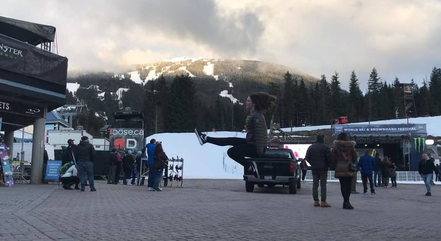 Looking for: a confidence boost? “Dance has built [my dancer’s] confidence and has opened her up to experiencing new things.”—Christina Looking for: dance that teaches life skills? “I think Irish dance has taught [my dancer] perseverance, grace under pressure, humility and the understanding that its ok to not be ok! Do your best work and enjoy the journey.”—Christine “I love the way the classes are structured to challenge the students just so much that also pushes them forward in their learning.”—Andrea Looking for: a way to encourage goal-setting? “[My dancer] is competitive and she wants to do well, but she’s a little girl who can be easily more interested in other things. Dancing with SRL and Miss Courtney has given her ways to practice at setting goals and working toward them. This was never more true than her second year when she was struggling with reading in first grade and simultaneously did poorly at a feis. Right after that, she set two goals—which she even wrote down—to get better at reading and to get better at Irish dance. By the end of that year, she had improved dramatically at both.”—Siobhan  Looking for: a unique, year- round activity? “If your child loves to dance, they should try Irish dance. It’s different than any other style of dance…[My dancer] has been doing other types of dance for years, but Irish dance is beautiful and unique.”—Christina Looking for: an outlet for male dancers? “On an uncommon comparison, I often think it has similar qualities to karate with the discipline, athleticism, and focus. But, Irish dance has joy and musicality that takes it to another level; this is why I think it’s also very good for boys even though it may not be the first thing one thinks.”—Siobhan Looking for: community and support? “I’m amazed at the choreography [my dancer] memorizes. I was so proud that she quickly gained the confidence to participate in a public performance and also do her first feis. I enjoyed watching her teach a dance to some younger Girl Scouts at one of our meetings last year, and I love that she has volunteered to help out at SRL classes with younger children—it’s all been a great growing experience for her in many ways.”—Becca “I wanted [my dancer] to get involved in something, but she did not want to try the traditional tap, jazz, ballet route. I got her to try a class at SRL the summer she was 4 years old and she fell in love with the dancing, the older kids, and of course Miss Courtney.”—Andrea Looking for: options? “Irish dance is great because it is completely up to you and your dancer as to how involved you want to be. Competition and performances are optional or you can choose to compete every weekend if you want. It’s a unique skill to have and fun to get to show it off!”—Jill L. If you’re looking for it for your dancer, SRL has it! While classes run on a school year schedule from September to June, we have a special offer to let new dancers get a taste before they sign up in the fall! SRL’s Intro to Irish Dance Summer Camp sign-ups are now open for new dancers 2-12, at work-friendly drop off times for parents. Learn more about the program here, or feel free to reach out to our Office Manager at [email protected]. They’re happy to help! This post is part of a series. Take a look at our last 411 post—tons of testimonials from dancers!— here. Also: check out the blog every Monday and Thursday for more posts about Irish history, dance culture, community news, and spotlights on our dancers, staff, and families—among other fun projects! And don’t forget to dance along with us on both Facebook and Instagram. Amazing Women in Irish History, Part 2 Catch up with Part 1 here! At SRL, we pride ourselves on helping shape our amazing dancers into incredible young women both in the studio and outside of it. Irish dance is a disciplined artistic sport that helps our dancers learn skills they’ll use their entire lives to succeed in whatever they put their mind to: goal setting, perseverance, and resiliency, to name a few. But it’s not just Irish dance that provides role models—Ireland itself is full of incredible women who broke barriers, went against the odds, and never gave up. Here’s a few more to inspire you: Teresa Deevy: Dramatist, Nationalist, and Women’s Rights Activist 1894-1963 “I don’t think we can start fresh. I don’t think anyone can. Wont we bring ourselves with us?” Often called “Ireland’s Chekhov,” Teresa Deevy spent her life not only adding to the cultural life of Ireland, but to social reform, as well. Deevy was raised in Waterford before going on attend University College Dublin—though she was forced to transfer to university in Cork at the age of 19 when the progression of Méniére’s Disease caused her to go deaf. While Deevy received treatment in Cork, there is still no known cure of the disease and the writer remained deaf for the rest of her life. She pivoted from her original goal of becoming a teacher to becoming a writer instead, all while being heavily involved in the Irish War of Independence, particularly in women’s groups. However, her most lasting contribution to the both the nationalist and feminist efforts came through her writing. Deevy’s plays (and eventually short stories and radio plays) were quietly subversive critiques of the limited options for women, even in supposedly modern society. She was highly critical of the way the Irish Catholic state repressed women, and continuously censored literary works—always making the political into the personal to help the audience connect. While her subversive views lead to her being largely unknown for a time after her death, interest had been revived and her genius has been celebrated in recent decades. Margaret O’Carroll: Queen and Patron of the Arts, Roads, and Bridges ?-1451 "[T]he best woman of the [Gaels] and the one who made the most causeways, churches, books, chalices and all articles useful for the service of a church…” Definitely the most historical figure on this list, Margaret O’Carroll lived so long ago that her birth date has been lost in time. What hasn’t been lost is what she devoted her life to: the betterment of Irish society on a number of fronts. Nicknamed “Mairgréag an Einigh” aka “Margaret the Hospitable” as our first records of her speak of the incredible banquets she hosted, including two in particular in 1433 with over 2,700 people in attendance—reportedly including orphans she was fostering. She also used her elaborate social events to lift up bardic artists, becoming a patron to many herself. Despite being an extremely wealthy queen (as she was the daughter of a queen and as she married the chief of the chief of the Offaly region of Ireland,) O’Carroll humbled herself to complete a traditional pilgrimage during which she commissioned a number of roads, bridges, and other public works projects to improve the lives of the people she passed. On top of all this, she was also a budding ambassador—she successfully negotiated (on her own accord, her husband knowing nothing of her plans,) the exchange of Irish prisoners from British forces in 1445. Kathleen “Kay” McNulty Mauchly Antonelli: Computer Programmer 1921-2006 “Irish immigrants could be just as good, if not better, than anybody.” Born in the midst of the Irish War for Independence, Kay McNulty was a rebel from the start—her father was arrested the night of her birth for his role in the IRA. When McNulty was 2 and her father was released from prison, her entire family immigrated to Pennsylvania. Despite only being able to speak, read, and understand Irish when she arrived, she immediately excelled in school, particularly math—leading a scholarship to attend Chestnut Hill College, where she graduated (with a degree in Math) in 1942. WWII was raging all over the globe, and McNulty immediately contributed her smarts to the war effort—initially in a role known only but the moniker “Computer” where she predicted ballistic trajectories. It wasn’t long before her incredible intelligence distinguished her and she was moved on to a new, top-secret project with five other females “Computers”: programming the ENIAC, aka one of the world’s first electronic computers. McNulty and her cohort, all women, are considered some of the world’s first computer programmers, though they didn’t received almost any recognition for their contributions until 1997 when they were inducted into the Women in Technology Hall of Fame. McNulty continued to program most of her life, all while raising 7 children, though most of her work was under her first husband’s name. Mary Robinson: Ireland’s First Female President
1944-present “I was elected by the women of Ireland, who instead of rocking the cradle, rocked the system.” On December 3rd, 1990, Mary Robinson was inaugurated as the 7th president of Ireland, making her the first female president in the country. Before her turn to politics, Robinson received her law degree from Harvard and became a distinguished law professor, as well as a practicing human rights and constitutional lawyer. When elected, she expanded the role of the Irish president further than any of her predecessors, committed to reforming Ireland into a modern country. Robinson did more for the rights of women and other oppressed classes than any Irish president before or since, including decriminalizing homosexuality and contraception, legalizing divorce, and enabling female citizens to sit on juries—leading to her becoming (and remaining) the most popular president Ireland has ever had, with a 93% approval rating. After serving 7 years as president, Robinson stepped down to concentrate on human rights all over the world by serving as the United Nations High Commissioner on Human Rights. She is still alive today and continues to concentrate on good works--as of 2019 she is the Adjunct Professor for Climate Justice at Ireland premiere university: Trinity College Dublin. But we’re not done yet—there’s just too many incredible Irish women to cover! Check back next Monday for a few more role models to add to your list. This post is part of a series. Read our last Irish history post, all about other amazing women in Irish history, here. Check out the blog every Monday and Thursday for more posts about Irish history, dance culture, community news, and spotlights on our dancers, staff, and families—among other fun projects! And don’t forget to dance along with us on both Facebook and Instagram. 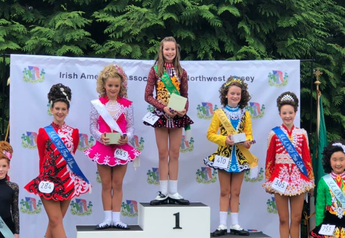 Part 1 Interested in trying out Irish dance, but aren’t entirely sure? We could talk all day long about the benefits Irish dance has, physically, mentally, and socially (and we have—check out these posts to learn more!) but why don’t we let some of our dancers tell you a little more about why they love Irish dance here at SRL! We hope you’ll join us! Looking for: exercise? “I love all kinds of dance but Irish dance is a fun fast kind of dancing!”—Rooney Looking for: long-lasting life skills? “As an adult, my time at SRL taught me the value of time management, passion and persistence. Until college, I was a multi-sport athlete, competitive dancer and a participant in various other extracurricular activities. I learned quickly how to manage my school load with these other commitments to keep everything in balance. I hold myself to a high standard to do everything the best I can, so being able to manage that while maintaining a passion for the sport taught me so much. Today, I approach everything I do with passion and persistence while remembering I have to manage my time well to accomplish all of my goals.”—Tara Looking for: enjoyment and self-expression? “I believe there are many reasons behind why people dance, including because friends or family members did it in the past or currently do it now. But I think that some people dance for the same reason I did: for a way to escape reality from time to time. I remember going to the studio, totally forgetting about the outside world, and just living in the moment that was happening throughout dance class.”—Christian  Looking for: cultural enrichment? “I think people dance because it is freeing. In Irish Dance, it is you and the floor working in harmony to produce something beautiful and culturally significant. It is a personal challenge…where the only opponent is yourself. It is also an opportunity to celebrate a culture very few understand. To represent and celebrate my Irish heritage through dance has connected me more with my family’s ancestry.”—Tara Looking for: a supportive environment? “SRL is an amazing community where all the dancers and teachers are very motivating, inspiring, and caring.”—Bailey Looking for: friends? “SRL has provided me with so many opportunities and memories that will last a lifetime.”—Lindsey 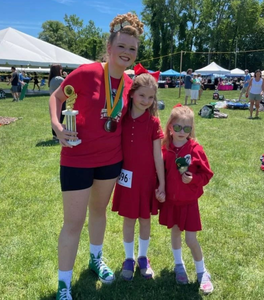 Looking for: peer mentors? “I always loved my time as an assistant teacher for Courtney and still keep in contact with some of my students today. When they finally got their jumps or skips, it was such a proud moment for me. I miss working with them!”—Tara Looking for: something to be passionate about? Just take Colby’s word for it when asked what he loves most about Irish dance: “Everything.” If your dancer is looking for it, SRL has it! While classes run on a school year schedule from September to June, we have a special offer to let new dancers get a taste before they sign up in the fall! SRL’s Intro to Irish Dance Summer Camp sign-ups are now open for new dancers 2-12, at work-friendly drop off times for parents. Learn more about the program here, or feel free to reach out to our Office Manager at [email protected]. They’re happy to help! This post is part of a series. Take a look at our last 411 post—tons of testimonials from parents!— here. Also: check out the blog every Monday and Thursday for more posts about Irish history, dance culture, community news, and spotlights on our dancers, staff, and families—among other fun projects! And don’t forget to dance along with us on both Facebook and Instagram. Amazing Woman in Irish History, Part 1 While SRL is certainly proud of our male dancers, we’re also all about empowering young women to be strong, confident, and successful leaders in a world that often encourages females to make themselves smaller. Irish dance is certainly full of role models, but Irish dance’s country of origin provides even more examples of women who broke barriers, rocked the system, and didn’t let anything stand in the way of their dreams. There’s too many to cover in one (or two, or three…) parts, but here’s a little sampling of amazing women in Irish history! Lilian Bland: Aviator 1878-1971 “I had proved wrong the many people who had said that no woman could build an aeroplane, and that gave me great satisfaction.” When we Americans think of pioneering female aviators, our first thought is Amelia Earhart—but Lilian Bland not only flew Ireland’s first powered biplane, but was the first woman anywhere to design, build, and fly a plane…all while Earhart was only 12 years old! A bit of a tomboy who loved to watch the birds in Carnmoney while growing up, Bland didn’t let the conventions of her time stop her from doing anything she was interested in. She became a sports journalist and press photographer before attending the first official aviation meeting in Blackpool and becoming obsessed with flying, taking detailed notes as she studied the designs and habits of the male aviators that dominated the scene. Through trial and error, she bravely tested her own inventions before landing on a successful design and flight, even selling her planes and gliders for a short time. Bland eventually traded her obsession with planes for one with motorcars, becoming Ford’s first agent in Northern Ireland! Maria Edgeworth: Novelist 1768-1849 “Those who are animated by hope can perform what would seem impossibilities to those who are under the depressing influence of fear.” Just as we quote Earhart in aviation, most would call Jane Austen one of the first female novelists—but Ireland’s own Maria Edgeworth published her first novel when Austen was still in diapers (though they did eventually become admirers of each others’ work.) She’s still considered today by many to be one of the primary figures in the evolution of the novel. Edgeworth lived all 81 years of her life with her family, never marrying but devoting her life to her loved ones and good works--including her prolific writing for both children and adults. Her mostly quiet life didn’t stop her from taking a firm stand in her work on economic, educational, and political subjects, or from forming friendships with some of the greatest literary minds of the time--Sir Walter Scott and David Ricardo included. While her work is marked by its clear style and humor, as well as rather straightforward morals, it doesn’t hide from topics that often got her in trouble with censors, such as Irish independence and British absenteeism. The end of her life coincided with the Great Famine, during which she used her privilege to serve her community. Veronica Guerin: Journalist 1959-1996 "I am letting the public know exactly how this society operates." Veronica Guerin was truly a modern woman and a jack/jill-of-all-trades: she was an accomplished athlete, playing for both the Irish national basketball and football teams, before starting her professional life as an accountant. She then pivoted into public relations and economic reporting, until settling on the career she’s best known for: investigative journalist. Guerin was known as a bulldog of a reporter, obsessed with getting the first-hand sources, often at a detriment to her personal safety. She used her accounting knowledge to follow the money and was highly respected among both her law enforcement and criminal contacts for her dogged commitment to the facts—though she also made plenty of enemies. There were multiple threats to and attempts on her life between 1994-95, and in 1996, at only 37-years-old, Guerin was taken out in a professional hit by a Dublin drug gang—making her one of 38 international journalists to die in the line of duty that year. Her death caused an uproar all over the country and led to numerous policy changes and even the formation of Ireland’s Criminal Assets Bureau. Her story was made into a film in 2003, staring Cate Blanchett. Dr. Kathleen Lynn: Medical Doctor, Politician, and Activist
1874-1955 “[E]very child [is] an individual and must know himself, or herself, loved.” Dr. Kathleen Lynn could make this list simply for the fact she graduated from the Catholic University Medical School to become a practicing physician in 1899, but her contributions to Ireland’s history only begin there. After practicing medicine in both the United States and Ireland for over 10 years, her distant relation, Constance Markievicz (more on her next week,) got Lynn involved in the fight for women’s suffrage, labor unions, and Irish independence, as well as both social and health care reform. Lynn had decided to become a doctor after growing up in the aftermath of the Famine, and it was this same experience that turned her into a revolutionary, using her medical skills to support the 1916 uprising. She was arrested for her efforts, but this didn’t stop her—after a brief deportation to England, Lynn was eventually elected the vice president of the Nationalist Sinn Féin party, and into the Dáil Éireann (though she never took her seat, as a form of protest.) While she eventually became fed up with the lack of change she saw in the political sphere, she refocused back to medicine and established Saint Ultan’s Children’s Hospital, a facility which concentrated on helping Dublin’s inner-city, impoverished mothers and children. But this is only the tip of the proverbial iceberg when it comes to incredible women in Irish history—check back next week for more! This post is part of a series. Read our last Irish history post, all about the lack of an Irish Independence day, here. Check out the blog every Monday and Thursday for more posts about Irish history, dance culture, community news, and spotlights on our dancers, staff, and families—among other fun projects! And don’t forget to dance along with us on both Facebook and Instagram. 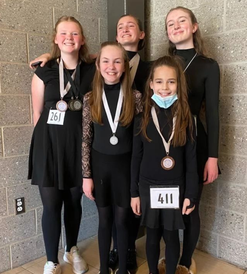 Part 1 Is your child interested in dance, but you’re not sure where to start? Why not Irish dance? We won’t try to convince you (check out these multiple posts in case you want some more convincing—we do have a strong case,) but thought we’d let our amazing community of parents tell you why SRL is the right choice, instead! Looking for: exercise with purpose? “It’s been great for working on his balance as well as giving him a way to learn something fun that he enjoys.”—Michaela Looking for: a confidence boost? “[Irish dance has given my dancer the] confidence in herself to be able to perform in front of large audiences. She is able to give herself goals to work towards and she knows that it will take time and hard work to achieve and is willing to put the effort in because she can see the progress happening.”—Jill Looking for: dance that teaches life skills? “There’s the movement, the exercise and athleticism, the focus that some children need to burn off the extra energy while learning self-discipline in a fun way.”—Siobhan “The most important lesson [my dancer’s] learned are the benefits of hard work and never giving up.”—Judy 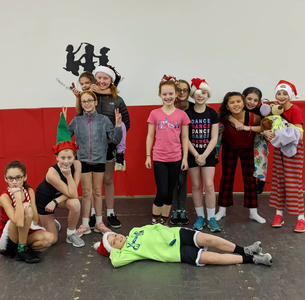 Looking for: peer mentoring opportunities? “I think Irish Step Dancing has been the first time [my dancer] has really felt challenged. But because she enjoys it so much and because of the guidance from the older girls…and of course from Miss Courtney’s teaching and motivation, she continues to try even when she gets so upset that she is not getting a step the first time around.”—Andrea Looking for: a unique, year-round activity? “Go for it!!! Some of the reasons I love it are because it is a year-round outlet for my daughter (and her dance mates.) She does not have to wait a whole year for one recital. She has competitions in the fall, performances throughout the winter and early spring, more competitions in the spring and summer, camp and other regular opportunities to dance, hone skills, perform, and become close with her friends.”—Siobhan Looking for: musical appreciation? “[Irish dance’s] upbeat cadence and structure definitely appeal to [my dancer] more than ballet or jazz dance. And as a musical family with 3 violin players, we love hearing the beautiful reels and jigs!”—Becca Looking for: a talented staff? “[We were] looking for a focused experience that would allow her to continue to advance competitively. Working with Courtney, and now with the addition of Christian and Bailey, [my daughter] has continued to improve as a dancer…I can honestly say the time spent working with the teachers at SRL and the friendships she has forged with other dancers are by far the best things that have happened to her.”—Laura 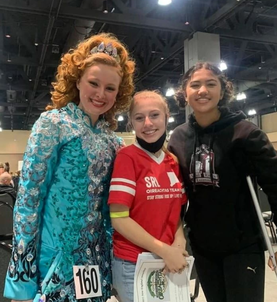 Looking for: community and support? “[Our dancers] have learned how to set long term goals and create plans to achieve them, time management and how to take corrections, the importance community and volunteerism, these are just a few.”—Ken & Dana “I’m amazed at the choreography [my dancer] memorizes. I was so proud that she quickly gained the confidence to participate in a public performance and also do her first feis. I enjoyed watching her teach a dance to some younger Girl Scouts at one of our meetings last year, and I love that she has volunteered to help out at SRL classes with younger children—it’s all been a great growing experience for her in many ways.”—Becca Looking for: a happy kid? “Give it a whirl! Just be aware that anything hanging on your walls will be off kilter from your student constantly jumping and kicking down the hallways. 😉”—Becca Looking for: a way to try things without commitment? “[Our dancer] quit soccer, basketball, ballet, tap, AND jazz! We were just hoping something would stick. Courtney offered a week-long mini-camp that gave [our dancer] a chance to try it out before committing to anything long-term.”—Ken & Dana If you’re looking for it for your dancer, SRL has it! While classes run on a school year schedule from September to June, we have a special offer to let new dancers get a taste before they sign up in the fall! SRL’s Intro to Irish Dance Summer Camp sign-ups are now open for new dancers 2-12, at work-friendly drop off times for parents. Learn more about the program here, or feel free to reach out to our Office Manager at [email protected]. They’re happy to help! This post is part of a series. Take a look at our last 411 post, all about our Tiny Jig program, here. Also: check out the blog every Monday and Thursday for more posts about Irish history, dance culture, community news, and spotlights on our dancers, staff, and families—among other fun projects! And don’t forget to dance along with us on both Facebook and Instagram. Read our last ten fun facts here. 1. Walt Disney himself had Irish ancestry (though his family immigrated to America in the 19th century.) His great-grandfather, Arundel Elias Disney, was born in Gowran, in County Kilkenny. 2. The first woman to be awarded an engineering degree in the UK and Ireland was Alice Perry of Galway in 1904 (only a few years after American Elizabeth Bragg in Berkely, California.) 3. County Clare is home to the westernmost European airport--the Shannon airport. It makes sense when you learn that the concept of duty-free shopping was invented there (by a local man named Brendan O’Reagan) in 1947. 4. Ireland featured heavily in some of the most recent set of Star Wars movies! Most prominently shown are Skellig Michael in County Kerry (aka Luke Skywalker’s island,) Malin Head in County Donegal, Loop Head in County Clare, Brow Head in County Cork, and both Sybil Head and Dunmore Head in Dingle. 5. While it’s something we usually associate with Scandinavia, Ireland is home to three glacial fjords: Killary Harbor, Carlingford Lough, and Lough Swilly. These beautiful places were formed in the ice age by a glacier carving a u-shaped valley, after which the sea floods it—resulting in a deep, high-walled inlet usually deeper than the nearby ocean. 6. Despite Ireland being a largely Catholic country, there are currently no Catholic cathedrals in its capital city, Dublin. All the original ones were converted to Protestant churches or the Church of Ireland by British officials, and have yet to be changed back. 7. Returning to popular media filmed on the Emerald Isle--Game of Thrones filmed many of its scenes (both studio and on-location) in Northern Ireland! Famous locations include the Magheramourne Quarry, Dunluce Castle, Ballintoy Harbour, and the Dark Hedges. 8. On that note, ever felt lost about the whole Northern Ireland/Ireland thing? Ever since 1922, Ireland is its own country, while Northern Ireland is part of the United Kingdom. It is not, however, part of Great Britain (which includes the rest of the United Kingdom, i.e. Scotland, England, and Wales.) 9. Dublin’s O’Connell Bridge that spans the River Liffey has a very unique feature—it’s the only traffic bridge in Europe with the same width and length!
10. The name isn’t just a coincidence--the Guinness Book of World Records was established in 1954 by the company as promotional material. The concept was originally meant to help settle arguments that arose it pubs. This post is part of a series. Read our last batch of fun facts here. Check out the blog every Monday and Thursday for more posts about Irish history, dance culture, community news, and spotlights on our dancers, staff, and families—among other fun projects! And don’t forget to dance along with us on both Facebook and Instagram. 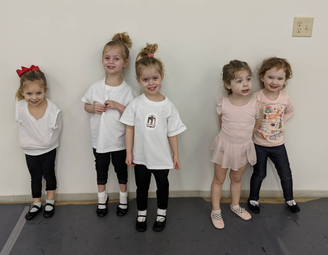 If you can walk, you can dance! Think your preschooler is too young to start dance? Think again! SRL Irish Dance Academy is proud to offer the Jump’n Jig program for our littlest dancers, aged 2 to 5! Split into two age groups (2-3 Tiny Jig and 4-5 Pre-Beginner,) this program was designed by early-childhood expert and ADCRG, Fiona Holmes. Classes start with helping our newest dancers learn how to act and engage within a dance class and move on to developing motor skills and musicality (all while making sure there’s plenty of fun in the meantime!) And with each class starting with a friendly welcome where they can bring along their favorite stuffed friend from home, SRL’s adoption of the Jump’n Jig program has helped get even the most reticent new dancer into the studio! 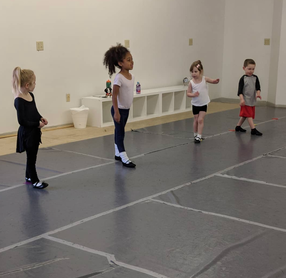 There’s plenty of benefits to starting your child in Irish dance (and starting them early!) and both our Tiny Jig and Pre-Beginner classes cover all the bases: safe social interactions with peers, instructors, and student mentors, working on not just foundational dance skills, but listening skills, and a way to grow a sense of personhood and independence. Beyond that are the physical benefits! We utilize two movement stations—circle time for direct interaction and a “track” across the room to practice skills solo—to work on single leg balancing (adding accessory movements gradually,) leg and foot strength, foot placement for Irish dance, moving on or around markers and targets, and concepts like right/left and front/back. These skills form a strong base for all forms of movement (think about football players taking ballet!) and many Tiny Jiggers move on through the levels and become life-long Irish dancers! Irish dance has a long and rich tradition and history behind it, but you don’t need to have Irish heritage to be an Irish dancer. While the steps and the music are part of Ireland’s cultural heritage, Irish dance has become a global community—and SRL is a tight-knit and supportive community within that larger sphere. In this encouraging environment, dancers are exposed to a culture beyond their own while they develop a strong sense of musicality and rhythm—learning to actively listen to the music, find the beat by clapping, and utilizing props so they can dance with the music instead of to the music (the hardest thing to teach a dancer!) 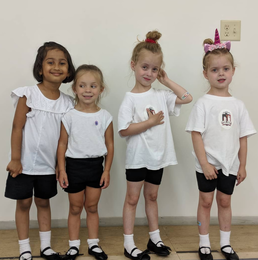 A successful SRL dancer isn’t just strong on technique—we see success as a confident, happy, and comfortable dancer! While classes run on a school year schedule from September to June, we have a special offer to let new dancers get a taste before they sign up in the fall! SRL’s Intro to Irish Dance Summer Camp sign-ups are now open for new dancers 2-12, with two sessions available at work-friendly drop off times for parents. Learn more about the program here, or feel free to reach out to our Office Manager at [email protected]. They’re happy to help! This post is part of a series. Take a look at our last 411 post, about the benefits of Irish dance, here. Also: check out the blog every Monday and Thursday for more posts about Irish history, dance culture, community news, and spotlights on our dancers, staff, and families—among other fun projects! And don’t forget to dance along with us on both Facebook and Instagram. 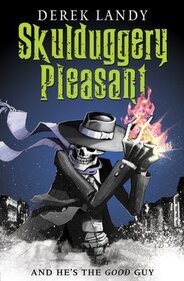 Volume XXVII Middle Grade, Part 3 Summer is in full swing, and that means it’s time for summer reading! The middle grade age range (8-12) is one of the most important times in a young reader’s development—when they learn deeper comprehension, strategic reading, to increase their vocabulary and reading speed, and help develop their writing and communication skills along the way. These middle grade books are set in Ireland, to help our Irish dancers not only get interested in reading, but even more interested in the country their favorite hobby comes from along the way! 1. Skulduggery Pleasant, Derek Landry The first book (of 15!) in the Skulduggery Pleasant series follows 12-year-old Stephanie as she inherits her horror-writer uncle’s estate upon his death. One night, alone in the house, Stephanie is rescued from a mysterious man by a walking, talking skeleton mage named Skulduggery Pleasant, and discovers that her uncle’s books may not have been fiction after all. Stephanie and her new friend team up to defeat the evil wizard Serpine, who’s looking for a magic specter that will give him tyrannical powers. Full of gallows humor (what else would you call a wisecracking skeleton?), this is a series of action, adventure, and magic, with a dash of finding yourself thrown in. The series has won numerous awards (including Publishers Weekly Best Books, ALA Best Fiction for Young Adults, and the IRA/CBC Young Adults’ Choice, among others) and a screenplay is in the works! Perfect for the pre-teen who loves all things creepy and good, long series to tuck into. 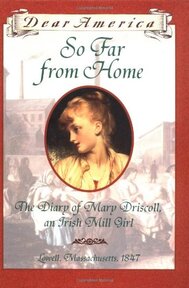 2. So Far From Home: The Diary of Mary Driscoll, an Irish Mill Girl, Barry Deneberg This is a personal recommendation from our Office Manager, Devon, who was obsessed with this series of “diaries” written by young woman throughout American history called “Dear America” when she was a middle grade reader (there’s one for every era you can think of, and a related series about young royals, as well!) This particular book focuses on the Irish immigrant experience, following a fictional girl named Mary Driscoll who escapes the Great Famine by coming to America—landing in Lowell, Massachusetts in 1847. The narrative is chock-full of Irish idioms and speech patterns of the time, as well as astoundingly accurate historical detail that will really bring the time period to life for young readers. Due to the historical nature of the books, they often deal with serious subjects (in this one: multiple deaths—particularly of parents—dangerous mill conditions, disease, and poverty), but hold both historical (there’s even an appendix with historical details—like popular songs and fashions) and life lessons within the hard truths. 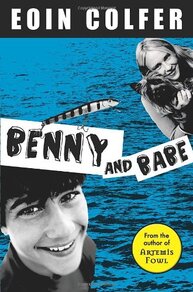 3. Benny and Babe, Eoin Colfer Technically the second book in Colfer’s (of Artemis Fowl fame) Benny duology, but readers can enjoy the books in any order! When 13-year-old Benny Shaw returns to Ireland for the summer from his new home in Tunisia (see the first book, Benny and Omar, for that story,) there’s not much to do at his lighthouse-keeper grandad’s on the coast. That’s until Benny meets Babe—the town tomboy and entrepreneur—who involves him in her “business”: reselling fishing lures to the same fishermen who lost them. A competition arises between the pair and bad boy ex-con Furty Howlin, but when danger arises community proves more important than their fight. Described as full of strong character development and a vibrant narrative voice, as well as plenty of Irish colloquialisms and humor, this coming-of-age novel deals with everything from bad home lives and first loves with a sensitivity and candor young readers will appreciate. 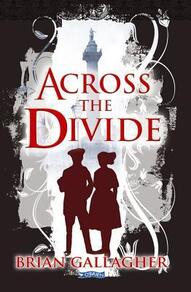 4. Across the Divide, Brian Gallagher Amazingly, we’ve managed to find TWO Irish middle grade books with male protagonists—something unfortunately hard to find in the children’s book sphere. This historical novel follows best friends Liam and Nora during the 1913 Dublin Lockout, where they find themselves as purported enemies. With Nora’s father being a successful wine merchant and Liam’s father being a mechanic and trade union member, their families find themselves on opposite sides during this major industrial dispute that included strikes and riots—one of the most significant disputes of its kind in Irish history. Liam and Nora’s perspective as young people caught in a conflict they don’t fully understand is an excellent window into this complicated and turbulent part of history for a young reader. Rife with danger and hardship, but always keeping humor at the forefront, this adventure will make—or break—Nora and Liam’s friendship. Learn more about the book from the author himself here. 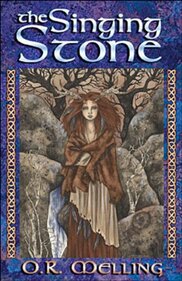 5. The Singing Stone, O.R. Melling One of the older books on the list (published in 1987—so not that old,) Melling’s coming-of-age fantasy novel combines a modern protagonist with the deep mythology and legend of Old Ireland. The story follows a young, orphaned artist named Kay as she returns to her homeland of Ireland from Canada after she begins experiencing dream-visions. In something like a middle grade, Irish version of Outlander (which is definitely adult-only,) Kay is transported back to the Bronze Age where she becomes responsible for recovering the lost treasures of the mythical race known as the Tuatha Dé Danann while a foreign invasion happens around her. With moral lessons that mirror modern ones worked into the complex tapestry of Celtic themes Melling weaves, we’re given historical context along with something to bring into our lives in real time. With excellent ratings across platforms, “it’s a time-slip adventure story with a lot of heart.” Happy reading! This post is part of a series. Read our last modern Ireland post, with picture book recs for our littlest dancers, here. Check out the blog every Monday and Thursday for more posts about Irish history, dance culture, community news, and spotlights on our dancers, staff, and families—among other fun projects! And don’t forget to dance along with us on both Facebook and Instagram. 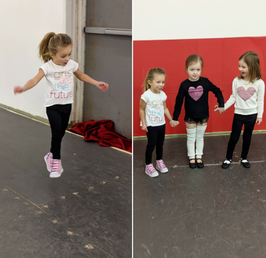 The question Irish dancers get asked the most is: why Irish dance? There’s a lot of amazing things to love about this artistic sport—its long and storied history, cultural enrichment, and beautiful costumes, to name a few—but the benefits of this particular type of dance can be wide-reaching, both physically and mentally, and even life-long! Let’s explore a few: Motor Skills & Mind-Body Connection: At the youngest age range—we offer classes starting a 2-years-old!--we concentrate on motor skills and correcting any left/right imbalances early in their development. Starting dance at any age is beneficial, but check out our post about the benefits of starting your dancer early here. Flexibility, Balance, Coordination, and Strength: While many dance studios in the past concentrated more on the steps than the conditioning, SRL has always been committed to providing balanced training that looks at what the whole dancer needs, not just their feet! All age groups are doing more than learning to dance, they’re stretching and completing exercises in class that strengthen the whole dancer. 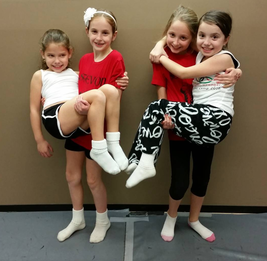 Independence: Whether your dancer is 12 or 2, they’ve been spending A LOT of time with you over the last two years. Going into dance class by themselves can be the first step toward forming their own personhood in this time when kids have been isolated at home more than ever. It’s also a fun, safe space for your dancer to make new friends without parental influence! Musicality: Irish dance is unique in many ways, but its connection to music is particularly strong! (Learn more about music in Irish dance here.) Dancers not only develop their sense of rhythm and a deeper understanding of music, but also cultivate an appreciation for traditional Irish music, often choosing to supplement their dancing by learning to play an instrument. Social Skills and Teamwork: Not all of Irish dance is a solo performance! Dance class is a great time for your dancer to practice appropriate social skills, as well as make new friends. Later goals can include céilí dancing and teams, where dancers learn to dance in unison and work together. 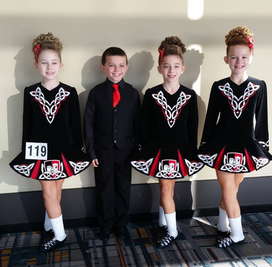 Goal Setting and Self-Determination: Whether the goal be big (going to Nationals!) or smaller (getting to perform in a fancier dress,) SRL is all about small, every day steps leading to larger goals. We help each dancer set personal goals in their dance career, and this example has proven to carry through in many dancers’ school performance and at home behavior. Irish dance is more about building up skills over time, and is less about instant gratification and more about hard work and dedication—skills that will serve them all their lives! Community: SRL is a community-focused studio where we’re all about supporting each other, even when we’re competing! But Irish dance is more than our studio, it’s a tight-knit, but also global community. All you need to enter that community is a love of Irish dance, and then you’re welcome! Interested in seeing all that Irish dance has to offer? Check out SRL’s Intro to Irish Dance Summer Camp for your dancer! This is a low-commitment way for students 2-12 (and their parents) to gage interest before signing up for classes. Check out the details (and the deals your session will include!) here. We hope to meet you soon! Have any questions? Feel free to email our Office Manager at [email protected]. They’re happy to help! This post is part of a series. Take a look at our last 411 post, a longer explanation of our Intro to Irish Dance Summer Camp program, here. Also: check out the blog every Monday and Thursday for more posts about Irish history, dance culture, community news, and spotlights on our dancers, staff, and families—among other fun projects! And don’t forget to dance along with us on both Facebook and Instagram. Irish Independence Day? We probably don’t need to say it, but: this is a very abbreviated history of incredibly complex topic! Check out this list of suggested books if you’re interested in learning more. Happy Fourth of July (aka American Independence Day) from all of us here at SRL! While we’re taught all about the American Revolution in school as US citizens, most of us probably don’t know much about the Irish counterpart. While technically there’s no equivalent day celebrated in Ireland, what we do have in common is the way we shucked off British rule to become our own nations (at least mostly.) We’re here today to catch you up to speed! First, some background. The British have been involving themselves in Ireland’s business for over 700 years, starting with the original Norman conquest in the 12th century—though Britain didn’t gain full rule of their neighbors until 1541 under Henry VIII. Henry’s famed departure from the Catholic church set up the Irish for religious rifts for years to come, as new Protestants flocked to Ireland to become landlords—displacing the already existing Catholic landholders. 17th century wars solidified Protestant rule in Ireland, much to the native population’s dismay, eventually leading to Ireland’s parliament being dissolved into 1801 when the United Kingdom was formed. But why did England cling so hard to this neighboring nation that clearly wanted them out? The British empire at its height (around 1913-1920) covered an astonishing 13.71 million square miles (almost a quarter of the world’s land) populated by 412 million people (23% of the world’s population at the time.) After centuries of conquest and expansion, the British empire (on which it was said “the sun never sets”) was the largest ever in human history to date—but it still begs the question: why? The simple answer is trade, power, and money (just like most things in human history.) Regarding Ireland specifically, a relatively small, agricultural society, it had more to do with the strategic advantage it offered to a country who relied so heavily on their reputation as a global naval power (and worries about foreign countries using it as a launch point for an enemy invasion.) That, and of course, the conscripted manpower available to them through the Irish populace so their expansion could continue and their power could grow. The Irish War of Independence came much later than you might imagine—lasting from 1919-1921—but those dates don’t account for the violence that proceeded or followed. The Irish population was decimated by the Great Famine (something the Irish at the time and modern scholars largely put on the shoulders of British rule) and the necessary immigration it caused. With Irish numbers decreasing from 8 million to under 5 million, the island suffered a generational economic setback as manpower decreased. Much like the American Revolution, the Irish were fed up with the British taking rather than giving to a nation they claimed was theirs, and the IRA (Irish Republican Army) was born. Those of us in 2022 will largely remember the IRA from its role in The Troubles in Northern Ireland from the 1960s-1990s—but that’s a story for another post (here’s some recommended books to read if you want to learn more!) In their original incarnation, the IRA was also called the “Irish Volunteers” as they were essentially a homegrown, voluntary group of Irish patriots who were against British rule. The 1916 Easter Rising—the week-long armed rebellion in Dublin—left over 500 dead and reinforced the popularity of the Sinn Fein separatist party, showing that Irish public opinion had swayed toward Irish independence. When the party won the General Election in 1918 and declared an Irish Republic (which landed half of parliament in jail,) things began to escalate between the Irish and their British overlords with the IRA at the helm. The first shots of the war were technically fired in 1918, the day the Sinn Fein party first met, but the majority of the violence didn’t begin until 1920. The IRA began using guerilla tactics combat the issue of having smaller numbers and less weaponry (much like the American Revolutionaries,) targeting the Royal Irish Constabulary (RIC), i.e. the British-run police force in Ireland. The campaign was fairly successful, leaving the IRA in control of much of the countryside by the end of the summer 1920. The British took steps to quell the insurgency by dispatching parliamentary troops made up of WWI veterans called “the Black and Tans”—but this only escalated things further. By the summer of 1921 more than 1,500 people had perished in the conflict, leading to a truce between the southern forces and the British on July 11, 1921. The conflict however, continued in the north and the more solidified agreement, the Anglo-Irish treaty, wasn’t signed until December 6th, 1921—establishing the Irish Free State, made up of 26 of Ireland’s 32 counties (aka the British, as they still do today, retained control of Northern Ireland.) So why not celebrate Irish independence on July 11th or December 6th? Well, because the violence didn’t stop when the treaty was signed. Between scrimmages with the British forces that remained throughout the country and the continued fighting in Northern Ireland, another 1,000 people or so died before the end of 1922. And, on top of that, the Irish Civil War (yet another topic to explore!) broke out in 1922. Essentially, from the Irish perspective, there isn’t really a reason to celebrate those particular days.
So, today, let’s eat our hot dogs and wave our flags—for though America isn’t perfect and certainly had its share of conflicts in the years following 1776 (and continues to do so,) we at least have an end date for the particular conflict that won us out independence. The Irish patriots of the 1910s and 20s have a lot in common with the American ones from 1760s and 70s, though our outcomes, largely due to distance, certainly ended differently. So let us wish a complicated happy 101st anniversary of independence to Ireland, too! This post is part of a series. Read our last Irish history post, all about Granuaile, the pirate queen, here. Check out the blog every Monday and Thursday for more posts about Irish history, dance culture, community news, and spotlights on our dancers, staff, and families—among other fun projects! And don’t forget to dance along with us on both Facebook and Instagram. 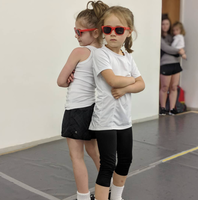 Does your child love to jump, wiggle, and move? Have they been bouncing off the walls all year? Are they obsessed with watching dance videos on YouTube when they get their coveted screen time? (Us, too!) Maybe it’s time to find a new outlet for all that excess energy…and why not try Irish dance? With Scoil Rince Luimni’s Intro to Irish Dance Summer Camp program, dancers from ages 2 to 12 will spend a week of classes letting that built up energy out, learning a new skill, and having safe, positive social interactions with new friends! This program is designed to really let your child try out this extremely active and fast-paced artistic sport in a secure and fun environment, but also to let you, as a parent, see if this is the right fit for your family. During one of our two Intro Summer Camp sessions, your dancer will take one class each evening (at a work-friendly time for parents,) for a full week to help them gage their interest (and get in some social time and physical exercise!) 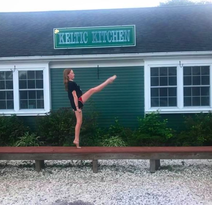 As Irish dance has innumerable benefits (like increased coordination, flexibility, balance, and strength…along with musicality and life skills such as goal setting, teamwork, and self-determination,) we’ve added extra value to the Intro to Irish Dance Summer Camp program, as well! While you’ll be able to meet our staff, explore the studio, and get a feel for what Irish dance is all about, your purchase of a session also gifts you the first four weeks of classes come September for free! For our littlest dancers in our Tiny Jig or Pre-Beginner programs (2-5) this comes to only $125, and for our Beginners (6-12) only $155. Sign up and see the full details here: Session 1: July 18-22 or Session 2: August 15-19 Ages 2-3, 5:00-5:25PM Ages 4-5, 5:30-6:00PM Ages 6-12, 6:00-6:45PM Have any questions? Feel free to shoot our Office Manager an email at [email protected]. They're happy to help!
We look forward to meeting you soon! This post is part of a series. Take a look at our last 411 post, all about the general benefits of summer camps, here. Also: check out the blog every Monday and Thursday for more posts about Irish history, dance culture, community news, and spotlights on our dancers, staff, and families—among other fun projects! And don’t forget to dance along with us on both Facebook and Instagram. Granuaile, The Pirate Queen Irish history has no lack of strong female role models. From Saint Brigid of Kildare to in the 5th century to women’s rights activist Teresa Deevy, who lived into the 1960s (not to mention all before, between, and after!), Irish women have been breaking through the societal confines of their gender as long as there’s been people on the island. At SRL, we’re all about girl power, so tonight we’re bringing you the story of a headstrong woman in a male-dominated “workplace”--Granuaile, Ireland’s Pirate Queen. Born Grace O’Malley in 1530 in County Mayo to the fierce, seafaring O’Malley clan, Granuaile grew up and was educated in Belclare Castle and on Clare Island. Her family rose to prominence in the 14th century, ruling the southern shore of Clew Bay and the majority of the Murrisk barony for over 300 years. From their early days, clan O’Malley took to piracy, boarding ships that were on their way to or from Galway while taxing all those who fished in their territory. They were a powerful and feared family all throughout Ireland, with their reputation making it all the way to British, French, and Spanish shores where their trading made them rich. Grace was willful and determined from a young age—legend tells that at only 11 years old she pleaded with her father to join him on the sea. He refused (saying her long, red hair would get tangled in the ship’s rigging) and set off, only to find Grace with all her hair shorn off next time he returned home. She had convinced him and from that day forth was known on all the ships she worked on and eventually commanded as “Gráinne ni Mhaille” aka “Bald Grace”—a name which morphed into the almost mythical title of Granuaile. At the age of 15, Granuaile married the son of equally influential O’Flaherty clan, Donal O’Flaherty, heir to yet another family known for their seafaring and piratical ways. The pair quickly had three children—Owen, Margaret, and Murrough— all while Granuaile continued to rise in her fleets’ esteem as a fearless leader. Donal died when Granuaile was only 23, making her head of both the O’Malley and O’Flaherty families (despite there being male heirs able to take over!) She would marry one more time—another political alliance with Richard Burke—who she famously “divorced” by calling to him through a window: “Richard Burke, I dismiss you” after one year of marriage. She kept control of much of his lands. Her life continued to prove to be legendary and boundary-breaking until her death in 1603 at Rockfleet Castle, one of her many properties (including the O’Malley Castle, Doona, and Kildavnet—her reach extending all throughout the Mayo region.) It’s said she slept with the mooring ropes of her ship strung through her bedroom window so she could board her own ship at a moment’s notice and had an elaborate colored smoke signal system to communicate between her strongholds. Her one son with Richard Burke, Toby Burke aka “Tiobóid na Long or "Toby of the Ships,” was born in 1567 and was so named because Granuaile notably gave birth at sea. Not only that, but within an hour of his birth the ship was attacked by Algerian pirates. Rather than continue to recover, Granuaile appeared on the deck, wrapped in a blanket, and lead her crew into battle. They won. Her most famous exploit, however, was her meeting with Elizabeth I. When the British captured brother and her two sons, Granuaile sailed up the Thames herself to petition the crown for their release. Granuaile and Elizabeth met at Greenwich Castle in September of 1593, a meeting during which Granuaile refused to bow as she was a Queen herself and recognized no other. The parlay was a success with the prisoners returned on the condition Granuaile and her fleets cease harrying British ships. Though Granuaile would eventually support the Irish insurgents who resisted British rule, she did end her piracy against the British and the two queens were said to have mutual respect for each other--they even died in the same year! As a pirate (and a woman who broke societal norms,) much of the Irish histories, which were typically written by monks, erased Granuaile from their annals. Today, most period accurate accounts we have of her life come from the British—but the Irish are attempting to rectify that. In 2021, the Mayo City Council, in conjunction with Ireland’s largest tourism board (Failte Ireland,) announced a plan to create a “Pirate Trail” honoring Granuaile and her place in Irish history. The plan is to post sign posts throughout the Mayo region, leading people through the history of the Grace O’Malley’s historic, intrepid lifetime. This comes on the heels of 100 years of Irish independence from the British, celebrating Granuaile as “one of the last Irish leaders to defend against English rule in Ireland.”
While a pirate may not technically be a role model for young women, someone like Grace O’Malley, who chases her dreams and breaks through the proverbial glass ceiling, certainly is. We might not condone the looting, plundering, and commandeering, we can condone someone who bucks society’s expectation of women. Strong, bold, and brave—just like our SRL dancers! This post is part of a series. Read our last Irish History post, all about Irish inventors, here. Check out the blog every Monday and Thursday for more posts about Irish history, dance culture, community news, and spotlights on our dancers, staff, and families—among other fun projects! And don’t forget to dance along with us on both Facebook and Instagram. 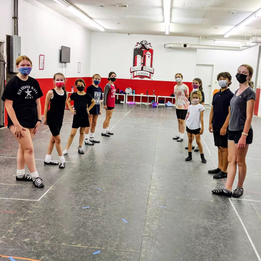 Summer is here! That means long months of no school--which can be a benefit or a problem, depending on which side of the parent/child divide you're on. But since the 1870s, parents have been turning to the most active possible solution to keep their kids engaged during the hottest months…summer camp! Connecticut has a long history with summer camps, with the first American summer camp having been founded in Gunnery, CT just after the Civil War. The idea caught fire and in a less than 20-year period around the turn of the century the number of summer camps in the United States rose from 100 to over 1,000. These first camps were all about removing children from urban environments to reconnect with nature, and this kind of summer camp hasn’t changed all that much since. But after WWII, parents were eager to return their children to a more innocent time and summer camps had a second boom—this time with a wider range of variety as special-interest camps such as sports camps and arts camps popped up all over the country. 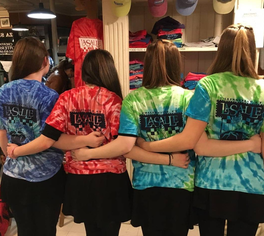 But what has made the summer camp an American institution? The skills taught at summer camps—be it outdoorsmanship or art forms like dance—have always been only part of the equation. The Harvard Graduate School of Education puts it this way: “All those classic camp dynamics—being away from home and parents, making new friends, being part of a team, and trying new things—are building blocks to crucial social-emotional [learning (or SEL)] skills.” Foundational, SEL skills include “self-awareness, self-management, social awareness, relationship skills, and responsible decision making” and have been found to be crucial for both success in school and in later, professional life. But, unfortunately, due to the restraints placed on teachers by state-mandated curriculums, we often see this type of learning not prioritized in the classroom. Americans have been turning to a solution outside of school for 150 years now, and we have the data to back it up: a 2005 study conducted by the American Camp Association found consistent and significant growth in SEL skills (and self-confidence) in children after only a single summer camp session! As important as SEL skills are, there’s another factor that’s helped give summer camps such staying power: the physical benefits. The majority of summer camps have always included a focus on physical activity, and in our increasingly digitized world, finding a healthy and active outlet for kids is more important than ever. We all know that our country has been facing issues for years when it comes to the health of younger generations—but it turns out summer camp could be of help. In a 2011 edition of the Journal of Adolescence, a study reported that adolescents with no organized summer activities were at the greatest risk of obesity, while a 2010 study found that day camp campers who were exposed to active peers and active teachers were more likely to be physically active even after camp ended. While a week of physical activity is definitely good, the way camps instill the habit of exercise is even better! 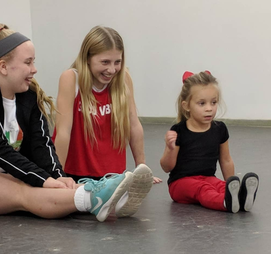 While our registered dancers here at SRL Irish Dance Academy (from Pre-Beginner level up!) know all about how fun one of our summer camps can be, what about someone who’s never attended an Irish dance class? Don’t worry, we have a great option for even the newest dancer, as well! SRL is hosting two, week-long “Intro to Irish Dance” Summer Camps this year. Each week consists of five straight days of one class a day (at work-friendly times for parents!) to give new dancers a real feel for our year-long programs. Click the link above to learn more about our two upcoming sessions from July 18th-22nd and August 15th-19th. We hope to see you there! This camp is multipurpose, for not only will it ease a parent’s mind about how interested their child is in Irish dance before enrolling for the year, but it will provide that social and physical outlet kids need every summer (but this one especially!) Even if your child finds out Irish dance isn’t right for them, they’ll still be invited into a fun, welcoming environment, taught to stretch and move their body in new ways, and be able to interact with their peers as both team mates and friends while they increase their self-esteem by learning a new skill. We’ve been holding classes in our clean, appropriately socially-distanced studio since September without any issue, and are excited to introduce your child to the world of Irish dance! 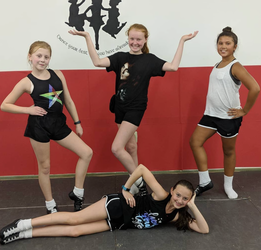 We could go on and on about the benefits of starting dance early (and we already have! check out our post about it,) but the real takeaway from SRL’s intro program is the same as any camp: increasing your child’s SEL skills while allowing them to express themselves in a healthy way and have fun! This opportunity creates a break from technology, lets them develop a sense of independence, let all that silly energy out, and have more and varied social interactions. And, not to mention, it gives parents a much-needed break, too! Learn more about our “Intro to Irish Dance" Summer Camp—which comes with a very special package deal for the Fall! Or feel free to reach out by phone or email ([email protected]) for more info. We look forward to dancing with you soon! 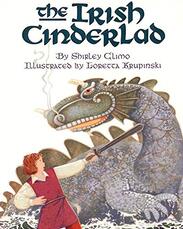 Volume XXVI Children’s Books, Part 4 With summer vacation just now getting underway, there’s a lot of extra time to fill for all our SRL parents! We’re here with some book recommendations for our littlest dancers (aka picture books) to help keep your child’s interest on Ireland and Irish dance over the break while entertaining them. (Maybe it will even inspire some practice!) Enjoy! 1. The Irish Cinderlad, Shirley Climo Illustrated by Loretta Krupinski This one is an incredible mash-up, with a twist to boot: not only is it a reimagining of Cinderella mixed with Irish folklore—it’s a gender-swap with a male protagonist! Becan’s always been worried about his big feet, but his worries multiple when his father remarries and his stepmother and her three daughters treat Becan cruelly. Becan runs away to escape a life with only bread crusts to eat and toiling in the field, and finds himself on a grand adventure. With a magical bull for a fairy godmother for help, Becan defeats creatures out of Irish lore and rescues a princess—running off and leaving only his remarkably large boot behind. When the princess is searching the kingdom for the owner of the giant boot, Becan wonders: what will be his fate when his feet give him away? This book has overwhelmingly positive reviews on Goodreads and Amazon for its mix of familiar fairytale with Irish myth (and for being one of the rare fairytales that centers on a male!)--get a preview with this video of the book being read out loud! 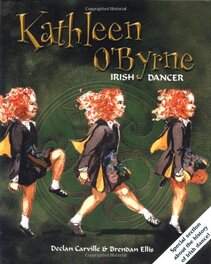 2. Kathleen O’Byrne: Irish Dancer, Declan Carville & Brendan Ellis Books about Irish dance are rare, and we’ve covered a few already in previous posts (check out part 2 or some holiday gift ideas for more,) but if you look hard enough you can find a few hiding out there on the internet! This one tells readers about a young Irish dancer named Kathleen, who practices her jigs, reels, and hornpipes any available moment of the day. Kathleen longs to wear an embroidered dress at a feis like the older dancers, and she’s absolutely crushed when she’s told she isn’t quite ready for that step. However, with the help of some neighborhood friends, she learns how to deal with disappointment and that the most important part of Irish dance isn’t the costumes or competitions, but the joy the art can bring her and others! This very important lesson for any Irish dancer to learn is complimented by beautiful illustrations painted by medical illustrator Ellis and even has a special feature about the history of Irish dance! 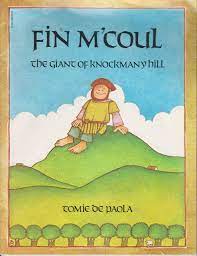 3. Fin M’Coul: The Giant of Knockmany Hill, Tomie dePaola Tomie dePaola’s books are all classics for multiple reasons: his iconic and instantly recognizable illustrations, his ability to translate the mythology of a multitude of cultures for little readers, and his ability to fill any lore with charm, kindness, and grace. This ALA Notable Book is no different as dePaola tackles one of the most iconic stories in Irish mythology: Fin M’Coul and the creation of the Giant’s Causeway. When Fin M’Coul is spending his days in peace on Knockmany Hill when he’s challenged by the Scottish giants across the sea. M’Coul spends his days building a causeway to go confront the Scottish when he learns that a much bigger and stronger giant, Cucullin is the one waiting to fight him. Terrified, M’Coul tells his wife Oonagh of his fears, and she comes up with a clever plan full of magic and cunning to save her husband. Along with the detailed borders based on ancient Irish metalwork, you can’t get more Irish than this! (And don’t miss dePaola’s other Irish books: Jamie O’Rourke and the Big Potato and Patrick: Patron Saint of Ireland.) 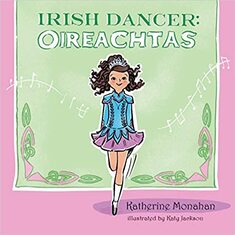 4. Irish Dancer: Oireachtas, Katherine Monahan Illustrated by Katy Jackson That’s right, we managed to find not one, but two books about Irish dance! For our Irish dance parents a little newer to the world, let us explain the second part of the title: Oireachtas (pronounced, roughly, ee-ruck-tuhz) is a larger dance competition for dancers competing at a higher level (a step above a feis, let’s say—you have to qualify to compete!) Monahan is a veteran Irish dancer who started dancing at 9 and ended her career by attending the Oireachtas World Championship in Ireland, so you know she knows her stuff! Accompanied by Jackson’s lively illustrations that help capture the unique movements of Irish dance out in the wider world, this story follows an Irish dancer as she practices and prepares for a big competition. But it’s not just about competing! It’s about determination in reaching your goals, as well as the happiness, confidence, and the strength that comes from the incredible artistic sport of Irish dance—a must read for our future World Champs! Listen to Monahan talk about her book on The Irish Dance podcast here. 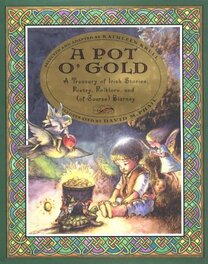 5. A Pot O’ Gold: A Treasury of Irish Stories, Poetry, Folklore, and (of course) Blarney, Kathleen Krull Illustrated by David M. Phail With a classic illustration style that will remind parents of the nursery rhyme treasuries of their childhood, Krull’s collection tackles the huge historical, mythological, and literary lore of the Emerald Isle. Combining everything from beloved recipes and stories to timeless poems by Yeats and Joyce and traditional songs (never forgetting those bits of blarney all the way through,) this collection is meant for families to enjoy throughout the years together. These tales and this rich history has engaged imaginations throughout the world for thousands of years—and these legends of everything from leprechauns and faeries to the real life culture of Ireland helps continue the tradition. A truly unique volume for both its expansiveness (over 50 individual entries!) and its effectiveness, this is one that every generation can enjoy together. Happy reading! This post is part of a series. Read our last modern Ireland post, all about Irish slang, here. Check out the blog every Monday and Thursday for more posts about Irish history, dance culture, community news, and spotlights on our dancers, staff, and families—among other fun projects! And don’t forget to dance along with us on both Facebook and Instagram. 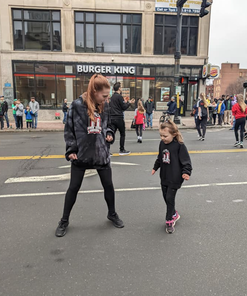 We’ve made it! We’re officially at the end of our core value acronym of G.R.E.A.T.E.R.--R for Resiliency. While every one of our core values are equally important, resiliency does hold a special place in the heart of SRL: it’s the thing that makes sure your dancer is able to make use of all those other qualities! While most people would automatically equate resiliency with a kind of “toughness,” the word means more than that. It’s not actually about being tough per say, but about being flexible, about the ability to adapt to both new and adverse situations, and about being able to reform oneself after you take a hit. Resilient people are tough, but not just tough—their particular form of toughness allows them to strengthen their sense of self as they learn, adapt, and grow. The word flexible is one dancers hear a lot about, and while it might be a key part of high kicks, flexibility is nothing on its own—you still have to have the strength to keep your form. That’s the truth of resiliency: not just flexibility, but the ability to stay strong while being flexible—essentially, embracing mistakes and difficulties as improvement opportunities, rather than focus on the negatives. A resilient dancer doesn’t give up just because a combination is challenging, but rather finds the reward in the hard work and delayed gratification of mastery (a quality studies show helps produce healthier and happier adults.) The combination of strength and flexibility is all about learning, rather than being discouraged—something that adults functioning in the real world need to embrace as much as Irish dancers in the studio. 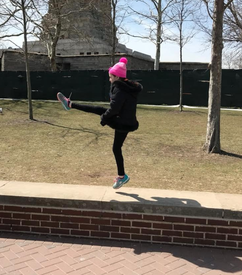 The world of dance is all about progress and growth (another core value!,) and that means constantly adapting as things change. Periods of transition (i.e. change in circumstance) are consistently evaluated as the biggest stressors in anyone’s life, no matter their age—moving, divorce, unemployment, grief, we all know the stereotypical examples. Like everything in life, learning how to deal with these big moments of transition start small: by learning how to adapt to changes on a micro-scale. Whether it be a classmate moving on to another level when you haven’t quite gotten there yet, disappointing feis results, or an injury, instilling resiliency allows our dancers to take a step back from their situation, problem solve, and continue forward. It’s easy for an unsuccessful moment to get you down, but resilient dancers (and people) know that chancing failure by taking safe, considered risks, and continuing to do so even when they don’t work out, is the only way to succeed. Lastly, resiliency isn’t just about outside influences—it’s equally about a dancer’s sense of self. The key for anyone to be able to adapt versus change when presented with a new or difficult situation is to have a strong sense of self that includes self-review, self-care, and self-love. Not all change is bad, of course, but there’s a difference between changing yourself for growth, and changing yourself to fit in—and while we want our dancers to adapt, we want them to be their best selves, not a forced self, while they do it! One of the main definitions of resiliency includes a substance’s ability to return to its original form after being bent, stretched, etc.—and that’s the kind of resiliency we want to instill in our dancers: the hard times in your life don’t define you, but rather your determination to recover from them. This stems from an ability to take stock, take care of yourself, and do what’s best for you—true resiliency is a dedication to the health of the self in each and every circumstance. 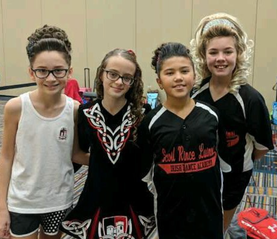 There’s our SRL Core Values: G for Growth, R for Respect, E for Excellence, A for Appreciation, T for Transparency, E for Enthusiasm, and now, R for Resiliency. It’s a resilient spirit that allows our dancers to take challenges as opportunities for growth, that in turn allows them to strive for excellence, and to appreciate even the hard moments in their dancing careers and life. It allows them to be transparent with themselves about their skills and abilities—knowing they’re able to keep going—and allows enthusiasm to be their leading way of looking at the world, even when things get hard. Ultimately, helping our SRL dancers become G.R.E.A.T.E.R. isn’t just about dance, but the life lessons your dancers can take out of the studio to become successful in whatever they set their minds to. This post is part of a series. Read our last core values post, all about capital E for Enthusiasm, here. Check out the blog every Monday and Thursday for more posts about Irish history, dance culture, community news, and spotlights on our dancers, staff, and families—among other fun projects! And don’t forget to dance along with us on both Facebook and Instagram. Read our last ten fun facts here! 1. The first documented immigrant that passed through Ellis Island hailed from Cork! The 17-year-old girl was named Annie Moore and she was traveling with her two younger brothers to reunite with the rest of their family in New York City on New Year’s Day 1892. 2. There’s a reason Ireland’s so green--County Dublin is home to over 130 named rivers and streams, not to mention innumerable unnamed tributaries! Some of the best names? Bloody Stream, Cemetery Drain, Cuckoo Stream, Kill o’ the Grange Stream, Little Dargle River, River Poddle, Robinhood Stream, Scribblestown Stream, and Sruh Croppa River are some of the most notable! 3. Limerick was briefly a Soviet City. During the War for Independence, the British government declared the area a Special Military Area—but the locals weren’t having it. The Limerick Trade and Labour Council went on strike in protest and declared the city “Irish Soviet.” They went so far as to print their own money and organize food supplies, despite the fact this only lasted for 12 days—April 15th-27th, 1919! 4. One of the most experienced early Antarctic explorers, Tom Crean, was from County Kerry. He was born in Annascaul and went on to join both the Discovery and Terra Nova expeditions (led by the even more famous Captain Robert Falcon Scott,) as well as Ernest Shackleton’s mission aboard the Endurance. He survived it all and went on to open a pub back in Ireland called The South Pole Inn. It’s still in operation today! 5. The first motorboat race in the world (and an international competition, to boot) was held in Cork in 1903! It’s was called the Harmsworth Cup (though it’s now more popularly referred to as the Harmsworth Trophy,) was held in the town of Cobh, and was held through 2011! 6. Little known fact: famed boxer Muhammed Ali has an Irish ancestor—with ties to County Clare in particular. Abe Grady, Ali’s great-grandfather, was born in Ennis before he immigrated to America in 1860. He later married an emancipated slave who became Ali’s great-grandmother. 7. Galway has the largest Gaeltacht (aka “Irish-speaking community” that typically holds fast to Irish traditions and culture) in Europe (and thus, in the world.) Unfortunately, a recent study showed that up to 70% of people in Gaeltacht areas don’t speak Irish (aka Gaeilge) daily (meaning only roughly 27,000 people use it every day,) though there are many movements that hope to preserve the language. 8. While the words “Ireland” and “surfing” don’t seem to have much in common, people have been surfing in Ireland since a man named Joe Roddy cobbled together Ireland’s first surfboard together from spare pieces of furniture in 1949. The sport is currently having a surge of popularity in Ireland—especially as one of the world’s biggest, surfable waves breaks regularly in Mullaghmore, County Donegal. 9. Valentina Island in County Cork is home to the world’s oldest known footprints! Discovered in 1993 by an undergraduate geology student, these tetrapod tracks are thought to be 385 million years old.
10. Dublin is a UNESCO “City of Literature.” This honor was bestowed as acknowledgement for having produced so many literary giants including, but not limited to: Oscar Wilde, James Joyce, and Bram Stoker, as well as Nobel laureates W.B. Yeats, Samuel Beckett, George Bernard Shaw, and Seamus Heaney. (The other recognized cities are: Norwich in England, Iowa City in the USA, Edinburgh in Scotland, Melbourne in Australia, and Reykjavik in Iceland.) This post is part of a series. Read our last fun facts post here. Check out the blog every Monday and Thursday for more posts about Irish history, dance culture, community news, and spotlights on our dancers, staff, and families—among other fun projects! And don’t forget to dance along with us on both Facebook and Instagram. 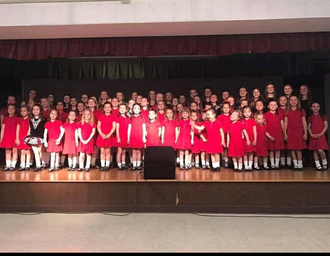 Read our original post on this subject here! At SRL Irish Dance Academy, our annual Showcase (aka our end of the year recital) is just around the corner! We have more first time Showcase participants than ever this year—both because of our bounty of new students, and the pandemic having paused the tradition for two years. We’re here to provide some tips that will hopefully help our dancers (and, by extension, their parents,) have a stress-free and fun time during this performance that’s more celebration than anything else! First off, we make sure to frame the recital in a casual way, and recommend you do so at home, too! We don’t stress this being a big, cumulative performance, but rather talk about it as a fun, low-key way for our dancers to share the skills they’ve learned this year (and the joy of dance) with friends and family. The audience isn’t the focus of the conversation—the dancer is! When they practice in class, we emphasize the importance of doing our best and showing our best skills, looking straight ahead and focusing on technique—not who’s watching them. 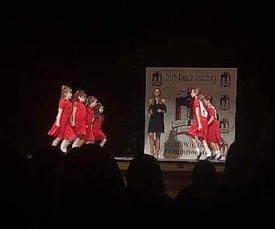 However, the audience is there and the dancers, no matter how little, will realize it eventually. Just make sure they remember—this isn’t any audience, it’s a friendly audience! It’s an auditorium full of moms and dads, sisters and brothers, aunts and uncles, and grandparents and friends that are there to do one thing: cheer each and every dancer on. Mistakes will happen, but no one in the audience will mind—they’re there to support and know that everyone on that stage is learning! Your dancer’s expectation of their self is likely higher than yours, just make sure they know that! And if they’re still feeling nervous? Practice makes perfect isn’t just a saying! There’s lots of way in this last week or so before the performance to help soothe their nerves. First off, try to make sure there’s no mirrors around while they’re practicing, so they can get used to an environment without them. However, feel free to record them performing for them to watch back—self-critique is an important skill to practice, and this is a fantastic opportunity. Lastly, try to work up a “mock audience”—this may be just your family, all their stuffed animals, or some friends from the neighborhood—the key is to help them treat the practice like the performance so it will feel normal day of. 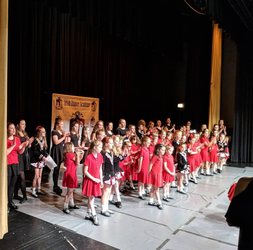 But our biggest tip? Don’t stress it! When you talk with your dancer about performing the emphasis should always be on the fun of performing. It’s a good idea to discuss what happens if and when they mess up—after all, even the most professional dancers still screw up on stage—and it comes down to three words: just keep dancing! This Showcase is supposed to be a fun time for them—if they fell down while playing tag, they’d get right back up and keep on running! Framing the performance as just another fun thing they’re doing with their dance friends is the best way for nervous dancers to keep going if they get scared. Don’t stress it goes for parents as well. Your dancer might freeze on stage, or decide to freestyle, or do everything backward. And that’s okay! It doesn’t mean they’re not learning in class, or not cut out for dance, or not cut out for performing—and we can guarantee there’s no mess up that will scar them for life. It’s important for both of you to remember this is the beginning of the road, emphasizing the achievement of going out on stage no matter what happens, and helping build their confidence on that bedrock. We have parents every year that swear their dancer is too shy or not ready—only to have that dancer go out on stage, and come back more independent, confidence, and proud of themselves then they were that morning. Just like Irish dance, performing is a skill that takes time to build, and this is just the beginning! 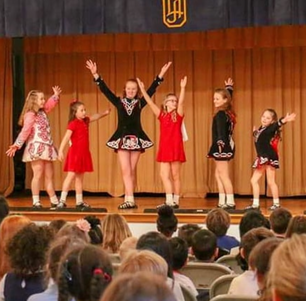 For our new and younger dancers, Showcase has a second opportunity in store for them: there’s no way they won’t leave inspired by the performances of the older and more experienced dancers. Many of our younger dancers will have never seen Irish dance performed at a higher level live, and can be a real moment of motivation for them—to see something like an “end” goal. Highly talkative dancers will likely leave and chat on and on about the hard shoe or Championship numbers, while our quieter dancers might show their passion for Irish dance in subtle ways—practicing more while no one’s watching, or writing or drawing about the Showcase. In any case, it’s the kind of excitement we’re looking to foster! Remember: the doors open at 2:45 pm for gold ticket holders and 3:00 pm for the rest of the audience. (Need to buy your tickets and can’t find the link? Email [email protected] ASAP!) There will be opportunities before the show to enter our raffle for some fantastic prizes, the proceeds of which will go to SRL’s fundraising efforts towards new costumes, competition stipends, scholarships, and equipment. We can’t wait to see you there! This post is part of a series. Read our last 411 post, our recital rundown, here. Check out the blog every Monday and Thursday for more posts about Irish history, dance culture, community news, and spotlights on our dancers, staff, and families—among other fun projects! And don’t forget to dance along with us on both Facebook and Instagram. Most Famous Tales, Part 2 Missed part 1? Check it out here! We’re back again this week with some of the most famed tales in Irish mythology! Much like Americans grow up hearing all about the Headless Horseman (which likely comes from an Irish myth originally!) and Rip Van Winkle, the French Cinderella and Little Red Riding Hood, and the Danish the Little Mermaid and Chicken Little (though those have made their way here, as well,) the Irish have their own common folklore and fairy tales. (Though, theirs tend to have actual faeries.) Enjoy! The Pangs of Ulster This one’s for all the mom’s out there! Long ago there was a cattle farmer named Crunniuc mac Agnomain (aka Crunden,) who tragically lost his wife. He struggled to work and take care of his three children, until one day he returned to the field to find the house in perfect order, dinner bubbling in the hearth, and a beautiful woman sitting at his table. She said her name was Macha and that she has decided to be his wife—Crunden agreed, and though he could tell she was of the Otherworld (more on that later) by how swiftly she could run, she was a wonderful partner and they were very happy. Then, one day, all of Ulster was invited to see the King Connor of Ulster’s fine new horses and before Crunden left, Macha warned Crunden not to boast of her of disaster would follow. However, when the King claimed no one in the land was as fast as his new horses, Crunden couldn’t help himself and bragged his wife was faster. King Connor declared Crunden prove it or forfeit his life, even though Macha begged the King and his men or mercy as she was heavily pregnant. When they all refused, Macha ran the race and the won, but the activity caused her to go into labor. When the twins she bore didn’t make it, Macha cursed the warriors of Ulster. Whenever they most needed their strength, it would desert them and give way to the pangs of labor for nine days and nine nights, lasting for nine generations. The Cattle Raid of Cooley (Táin bó Cuailgne) Considered the Ulster cycle’s most epic story, this tale takes place in the 1st century AD and centers around Queen Mebh/Maeve, jealousy, and fragile egos. As daughter of the High King of Ireland, she was greatly offended when her husband, Ailill, proved himself to be wealthier due to the prized white bull in his possession. Maeve learned there was only one other bull in all of Ireland more prized than her husband’s: Donn Cuagilnge, the Brown Bull of Ulster, owned by the powerful Daire of Cooley in Ulster. Maeve asked him to loan her the bull for a year in exchange for many treasures and he agreed—but when he overheard Maeve’s men boasting that if the Daire hadn’t agreed they would have taken it by force, he was angered and reneged on the deal. Maeve and her husband combined forces, and with the Daire’s men also afflicted with the Pangs of Ulster, Maeve thought she would be victorious. However, a great warrior named Cú Chulainn from Connacht defeated each of Maeve’s warriors one at a time, including the greatest (Ferdia) in an epic, five-day battle. Finally, the bulls fought, with Donn Cuagilnge emerging as the winner. Queen Maeve and the Daire then made a peace treaty that ensured there would be no battle between them for seven years. Oisín and Niamh The most commonly known legend of the Otherworld (aka Tír na nÓg, the Land of Youth,) is the tale of Oisín and Niamh. Many years ago lived a legendary warrior named Oisín, son of the leader of the great warriors known as the Fianna, and together they explored and protected all the beautiful green hills of Ireland. One day, Oisín and warriors came upon a beautiful maiden on a stately white horse surrounded by golden light. She introduced herself as Niamh, and said she was looking for the warrior Oisín, as she had heard tell of his skill, so she could bring him back with her to her home in magical land of Tír na nÓg where no one aged or knew sadness and lived forever. Oisín agreed, promising his father he would return soon, and though Tír na nÓg was all Niamh had promised and they were happy together, he missed his homeland. Niamh was reluctant to let him return, for though Oisín believed only a few short years had passed, 300 years had passed in the human world. But she agreed, with one condition—he would ride her white horse to visit and never let his feet touch the ground while he was there. Oisín was saddened by the changes he saw, but stayed to help a few old men move a rock—however, when he leaned off his horse to assist, he fell. When Oisín touched the ground he aged immediately, living only long enough to tell his tale. Diarmuid and Gráinne
Another famous hero in the Fianna’s ranks, Diarmuid, was known for his fighting skills, but even more for his great beauty--he was born with a Bol Sherca (“love spot”) in the middle of his forehead, causing all who saw him to fall in love. Diarmuid was very loyal to the Fianna’s leader, Finn Mac Cumhaill (aka Finn McCool,) and was there at his side when Finn decided it was time to take another wife. He chose Gráinne, the most beautiful woman in Ireland. Gráinne had fallen in love when she was only 12-years-old with a boy she saw playing hurling, but many years had passed and she hadn’t seen the boy again, so she agreed to marry. But at her wedding feast she saw him again for the first time in so long: the boy she had always loved was none other than Diarmuid. Gráinne hatached a plan—she drugged the wine of all the warriors so they would sleep and put Diarmuid under a geasa to run away with her (meaning an act had to performed or great misfortune would ensue—a kind of oath.) Though it broke his heart to betray his leader, Diarmuid could not break a geasa. Aengus Óg, the god of love, approved of their match and decided to help them, though Finn McCool pursed them in revenge and they could never stop running. They ran for years and years, while Diarmuid and Gráinne lived as man and wife and raised five children, but they were tired and wanted to make peace with Finn. Though they resolved their issues and lived peacefully for a time, Finn McCool eventually got his revenge. When, years later, Diarmuid was gored by a boar, Finn McCool initially refused to heal him with water from his hands (one of his magical abilities.) Though he changed his mind, it was too late and Diarmuid passed on. As we say in English: The End! Or, if you prefer, in Gaeilge: Sin Sin (which really means: that’s that!) This post is part of a series. Read our last mythology post, filled with four other famous Irish tales, here. Check out the blog every Monday and Thursday for more posts about Irish history, dance culture, community news, and spotlights on our dancers, staff, and families—among other fun projects! And don’t forget to dance along with us on both Facebook and Instagram. 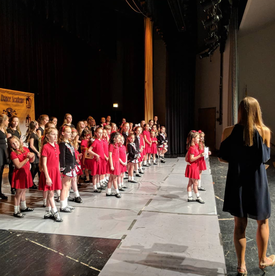 With SRL’s annual Showcase recital just around the corner (we hope you’ve marked your calendar: Saturday, June 18th!) we’re on the blog tonight with a rundown of all you need to know! After the past two years getting paused for the obvious reasons, we know many of our parents and dancers have never participated in an annual Showcase, so we’ve gathered all the info here for you to refer back to. First up: beforehand prep! While all dancers should have their costumes all set at this point, we recommend double-checking them now so nothing’s missing day of (no one wants to go looking for a second poodle sock in a scramble at 8 am for that afternoon’s performance.) And parents, if you don’t have your ticket yet, it’s time to buy! There are two kinds of tickets available: the Gold tickets, which allow you in to the auditorium at 2:45 pm to get priority seating, or the Standard, where you’ll enter at 3:00 pm for the 3:30 pm show! Remember: tickets are nonrefundable, but they are transferrable. If something comes up, you’re able to pass your ticket along to a family member or friend! Since this is a private event, all parents have received the link to buy tickets in the monthly announcements…but if you’re having any trouble locating it just reach out to [email protected]. 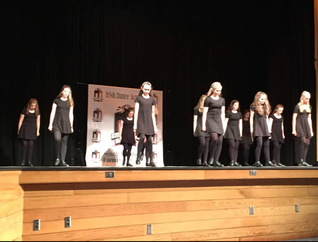 Now, the big stuff: day of! Dancers should be dropped off by their parents at 11:30 am at the East Catholic High School auditorium in Manchester for the all-important dress rehearsal (Tiny Jig dancers will arrive a little later at 1:30 pm.) The reasons for this early arrival are many. Dress rehearsals help newer dancers (and the experienced ones!) get used to the stage after only practicing in the studio, tamp down their nerves, get in some last-minute practice, and let dancers receive any last-minute corrections and tips before the big show! For our staff, it makes sure we can nail down things like lighting and cues, while working out any logistical kinks. Also, since dancers are backstage for the majority of Showcase, it gives them a chance to see the show! In the case of our littlest dancers (Tiny Jig and Pre-Beginner classes only,) one parent is allowed to attend rehearsal with each dancer and stay throughout the day until showtime. As only one parent (and no siblings, friends, etc.) are allowed to join each dancer, we understand that some parents may need to drop off their dancer—don’t worry, each class will have a parent volunteer assigned, so there will be plenty of supervision! While dancers Pre-Beginner and above will head back to backstage once they’ve performed, our Tiny Jig dancers will have a special place to sit to watch the rest of the show. One last bit of info for all ages: make sure your dancer eats before rehearsal and comes with plenty of snacks! It’s a long day, and we need our performers properly fueled! 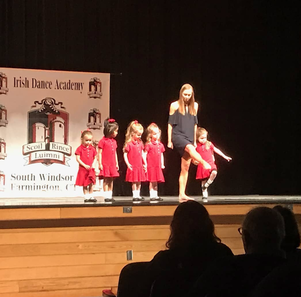 Then, on to the show! The Showcase will begin at 3:30 pm, wrapping up around 5 pm. This is our 8th Annual Showcase and aims to celebrate all our dancers—from 2-years-old to our Championship dancers—doing everything from showing off the new skills they’ve learned this year to displaying the best Irish dance has to offer in fun, exciting numbers! It’s also an opportunity to celebrate our 2022 graduates, scholarship recipients, and do some all-important fundraising for the studio. Make sure to check out all the incredible prizes we’ll be offering in our raffle this year, from Hartford Yard Goats tickets to Bear's Smokehouse gift certificates, and so much more! The final reminder? To have fun! Performing can be stressful, especially for young or new dancers, so our biggest focus is to make sure the fun of performing is emphasized for them so they’ll be excited to return to Irish dance and all its innumerable benefits next year! While performing isn’t necessarily every dancer’s goal, it can be a confidence-boosting and exciting experience that helps dancers mark their progress after a year of hard work. We look forward to seeing you, your dancer, and your enthusiasm there! This post is part of a series. Read our last 411 post, all the parental role in a dancer's development, here. Check out the blog every Monday and Thursday for more posts about Irish history, dance culture, community news, and spotlights on our dancers, staff, and families—among other fun projects! And don’t forget to dance along with us on both Facebook and Instagram. Most Famous Tales, Part 1 In all mythologies, there’s a few tales that everyone knows from the time they’re children. For Greek mythology it might be the story of Persephone and Demeter or Midas and his golden touch (or so many more—that’s what we tend to know best in the Western world.) For the Norse it might be Thor’s hammer, Ragnarök, or the nine realms. And for Anglo-Saxon myths it might be St. George and the dragon or Beowulf…but what about Irish mythology? While we’ve talked about many of the creatures and folklore that imbue Irish tales on the blog, we’ve not told you many stories. Here are a few of the most famous ones! The Salmon of Knowledge According to legend, in the River Boyne there once lived a fish called the Salmon of Knowledge. A learned poet named Finegas has been trying for seven long years to catch the fish, as it was said the first person to eat the fish would be wiser than all other men. When a young warrior named Fionn came to live with Finegas to learn from him, Fionn asked why Finegas fished all day, but the poet wouldn’t reveal his motivations. Then, finally, Finegas caught a fish and knew it was the Salmon of Knowledge! He commanded Fionn to cook the fish right away, but to not eat a single bite. Fionn listened to his master, but while turning the fish on the spit, Fionn burned his thumb and placed it in his mouth to soothe himself—and received all the knowledge Finegas had wanted for himself! And so Fionn left Finegas’s tutelage, as Finegas had no more to teach him, and Fionn went on to become a wise and great poet, warrior, and leader of the Fianna—the greatest group of warriors Ireland has ever known. The Children of Lir Long in the past, there was a King named Lir who lived happily with his wife and four children: Fionnula, Aodh, Conn, and Fiachra. When Lir’s wife died, the family was nearly crushed by their grief, so Lir went out to find a new mother for his children. High King Dearg sent his daughter Aoife to marry Lir, but Aoife was not kind-hearted, instead cruel and jealous of Lir’s love of his children. One day when the children were playing and swimming in Lough Derravaragh, Aoife used Druidic magic to cast a spell on all four of them, turning them into swans for the next 900 years! Lir banished Aoife from his kingdom, but there was no way to reverse the spell—only a sound of a Christian church bell would be able to bring the children back. So the siblings spent 900 long years as swans—until they were released from their torment by a monk named Caomhog who rang the bell and watched in amazement as the swans turned into elderly people. The children died in each other’s arms and were buried in one grave, but the monk dreamed of their happy fate: they were reunited with Lir and their mother in the afterlife. The Formation of the Giant’s Causeway Located on the Antrim coast, the Giant’s Causeway is a popular tourist attraction today, but it is said to have been formed long ago by a giant named Finn McCool (aka Fionn Mac Cumhaill.) One day, Finn McCool stood along the coast, looking out across the Irish sea to Scotland, when a less-intelligent Scottish giant named Benandonner began to shout insults and threats at him! Finn took great chunks from the surrounding cliffs and threw them into the sea, creating a causeway made of great columns of sheared off stone so he could reach the other giant. However, as he got closer Finn realized that Benandonner was much bigger than him. Not wanting to take his chances, Finn and his wife Oonagh came up with a plan to trick Benandonner instead. They dressed Finn up as a baby and when the Scottish giant came knocking at their door, he ran away in fear--if that’s how big Finn’s baby was, Finn must be enormous! In his haste and to prevent being followed, Benandonner ripped up the causeway, leaving only the bit on Ireland’s coast that still exists today! The Harp of Dagda
Long long ago there was a warrior of much-renown named Dagda Mór who became king of the Tuatha Dé Danann. Known as the many-skilled, lord of knowledge, the maker, and man of the peak, Dagda had many wonderous possessions, but none so wonderful as his harp. Dagda’s beautiful harp warranted its own name: Uaithne. This harp had many talents—it kept the seasons in order, prepared warriors for battle, and its music was so beautiful it conquered all sorrows. When the Tuatha Dé Danann were battling against the Fomorians, the Fomors coveted Dagda’s harp and stole it! Though the Fomors were defeated in battle, their forces were still many, but Tune back in next week for another crop of Ireland’s most famous mythic stories! This post is part of a series. Read our mythology post, all about how the Star Wars hero, Luke Skywalker, is based on Irish myth, here. Check out the blog every Monday and Thursday for more posts about Irish history, dance culture, community news, and spotlights on our dancers, staff, and families—among other fun projects! And don’t forget to dance along with us on both Facebook and Instagram. 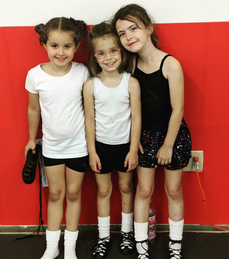 SRL’s core values are all about helping your dancer be G.R.E.A.T.E.R., and this week we’ve reached the second E, for Enthusiasm. This is a particularly important topic as we move into prep for our annual Showcase (Saturday, June 18th, mark your calendars and remember to buy tickets!)—enthusiasm is a huge part of showmanship and giving your all to any and all performances! But enthusiasm is more multi-faceted than that—it’s also a way of approaching whatever life brings you that can serve your dancer outside of the studio. Let’s explore! First off, we want to make sure all our dancers are enthusiastic about dance! As dancers move up through the levels and Irish dance asks more of their time and commitment, we want to make sure they continue to love what they’re doing. But more than that, we want them to continue to have an enthusiastic attitude about all that dance entails: the hard work, the challenges of new steps and levels, the ups and downs of class and competition—always knowing it will make them a better dancer as a result. As a studio, we try to take the dancers’ opinions and preferences into account in class to help keep their interest and enthusiasm (i.e. make sure they have fun!), while balancing it with what they need to improve in their practice. While enjoying themselves is always important, instilling enthusiasm is also about facing the more difficult parts of dance with an upbeat and constructive attitude—not just the fun bits! 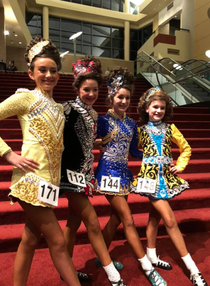 Because enthusiasm is above all, an attitude. That means approaching all people and situations with a positive outlook and gratitude for the chance to grow, rather than defeatist or resentful feelings. It’s always okay to get frustrated, be sad, or even angry—but the key is to not let those emotions be the primary ones they experience dance or life through. They have their time and their place to be felt and expressed, but approaching all life throws at them with enthusiasm (i.e. that challenges will help them grow as people and improve their lives for having faced them) can help our dancers bounce back from anything. It can be hard and terrifying to put your all into anything—it’s a kind of confidence in yourself, in your abilities and your possibility for growth, that even many adults can struggle with. (There’s also those dreaded teenage years, where having too much enthusiasm for anything can feel deeply uncool.) By creating a safe space and community based around enthusiasm—where enthusiasm is the norm—the studio is helping model a positive attitude and appreciation. This has two sides: not only is it absolutely cool to care about something and give all you can to it, but appreciating the challenges you’re presented with is the best way to take care of yourself and grow in any aspect of your life! 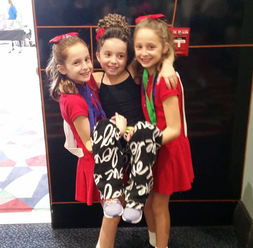 Enthusiasm really can also be seen as a type of care—your dancer caring about their teachers, families, fellow dancers, and especially themselves. To care about yourself and others is to give your all to your experiences with them (and with yourself!), meaning changing the mindset around problems and difficulties. Rather than approaching a hard class, a bad test grade, a fight with mom or a friend, or not meeting a goal with only irritation, unhappiness, or antagonism, giving your all and caring about these people and situations means accepting those feelings and moving forward—in positivity. Learning from hard experiences and growing from them is the key to enthusiasm, and will help our students not only in school and later work, but to better develop their interpersonal relationships (and relationship with their self and self-confidence!), as well. As we said, the Showcase recital is just around the corner, and performing can be an anxiety-inducing time—especially for our newest dancers! As a studio, we appreciate the help our parents give us outside our walls to instill enthusiasm about hard and scary new challenges with their dancers, knowing it will only help build their confidence and form their outlook on life. We look forward to seeing all that enthusiasm up on stage in just a few short weeks! This post is part of a series. Read our last core values post, all about Transparency, here. Check out the blog every Monday and Thursday for more posts about Irish history, dance culture, community news, and spotlights on our dancers, staff, and families—among other fun projects! And don’t forget to dance along with us on both Facebook and Instagram. |
SRL NewsFind all of our latest news on our Scoil Rince Luimni Facebook page! Categories
All
Archives
August 2022
|
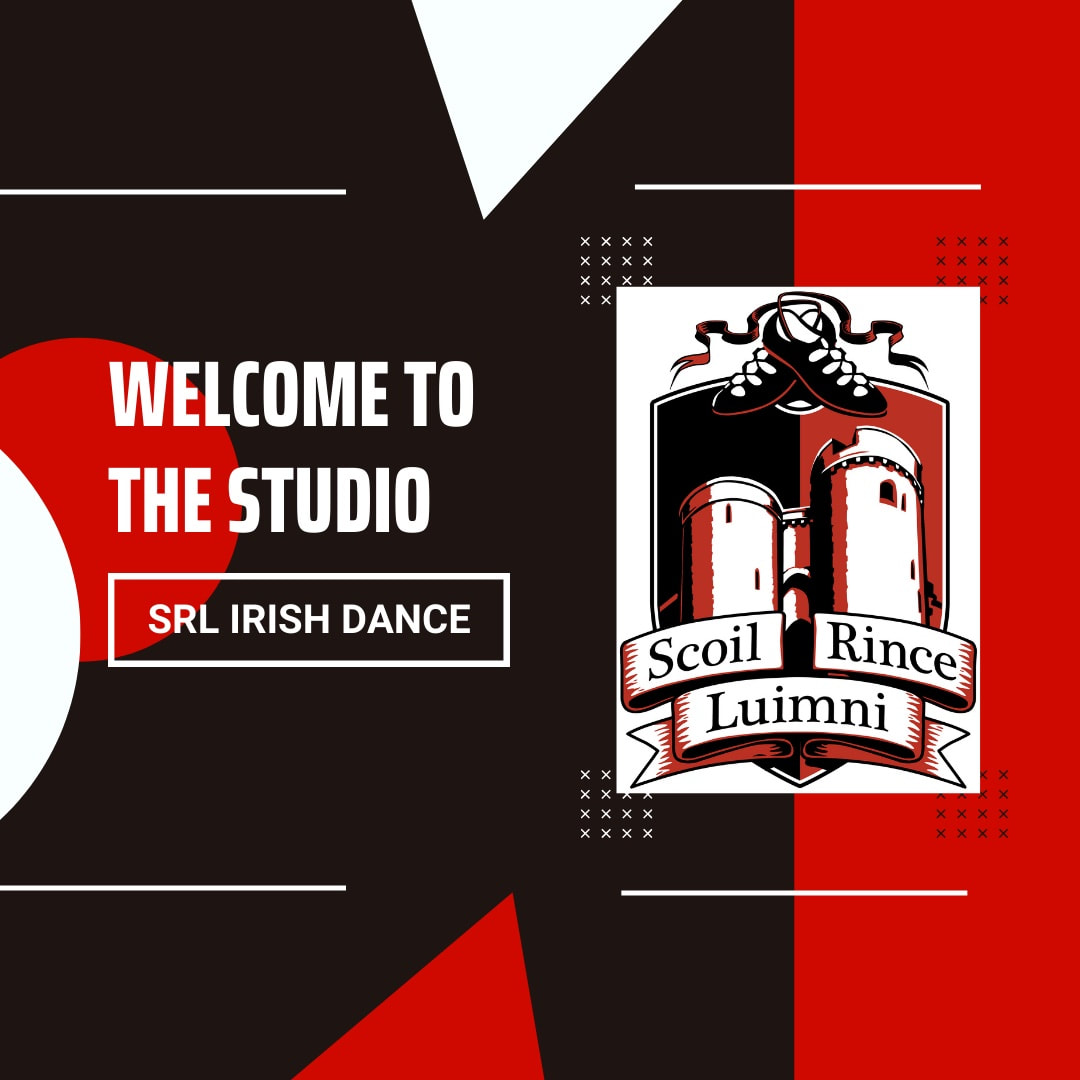
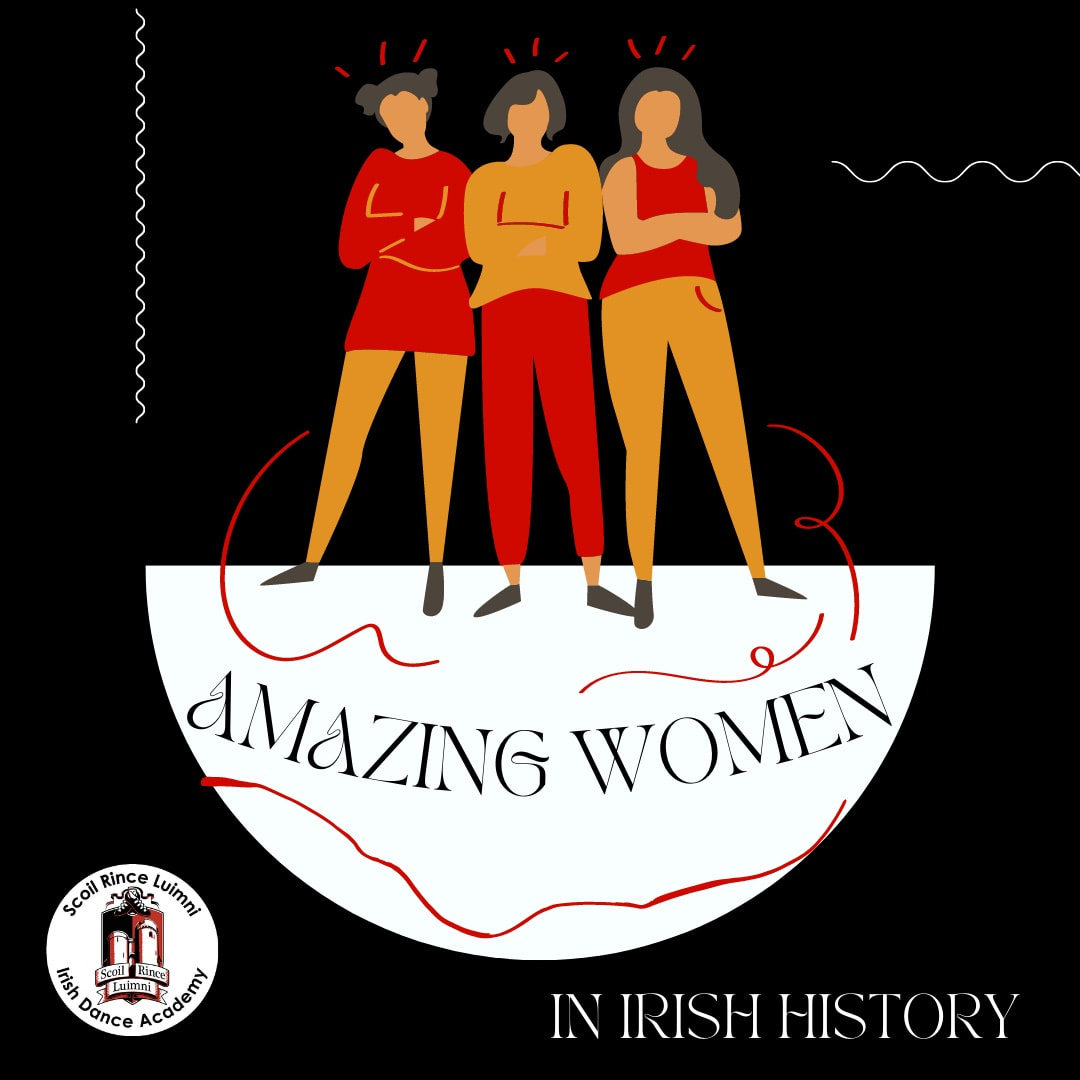
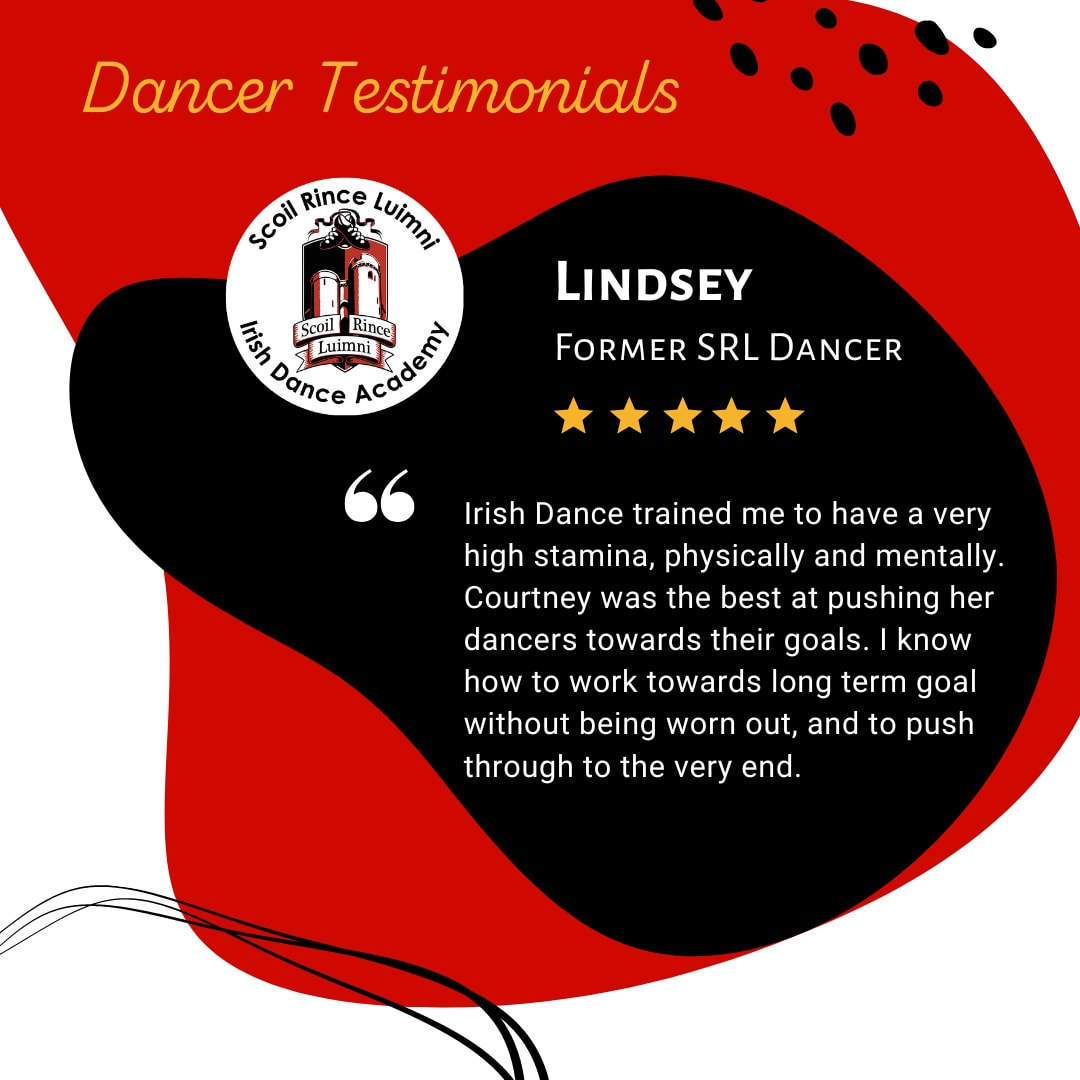
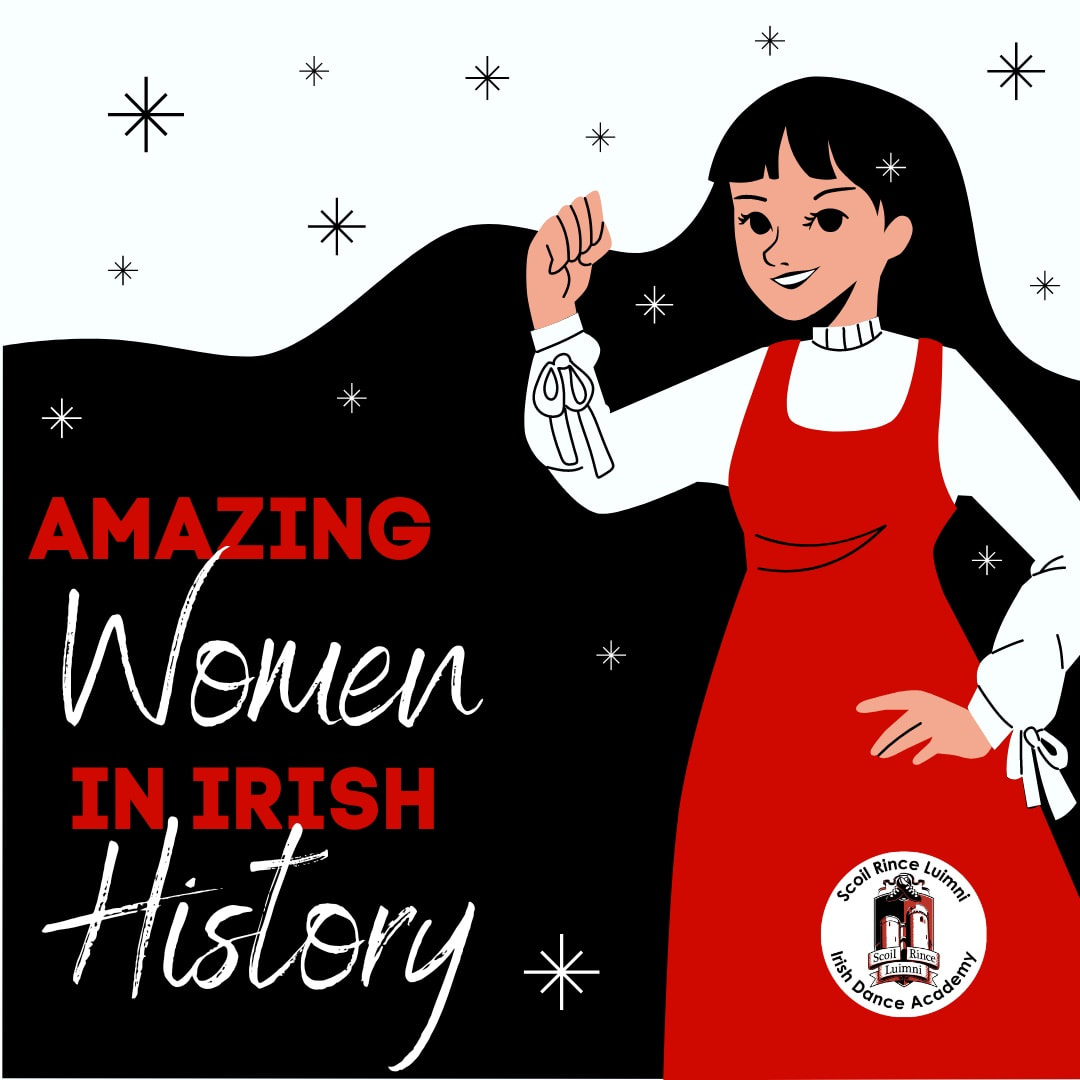
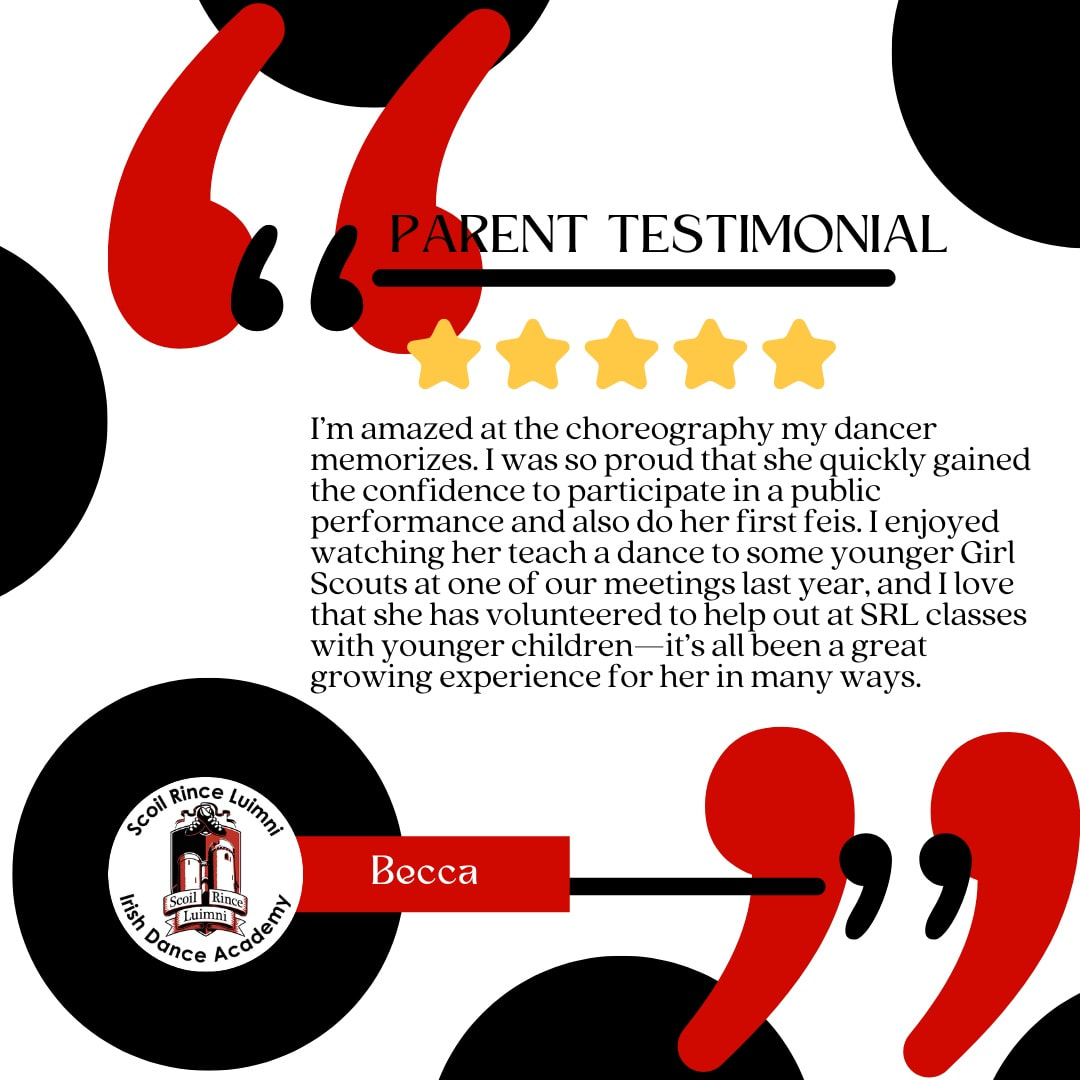
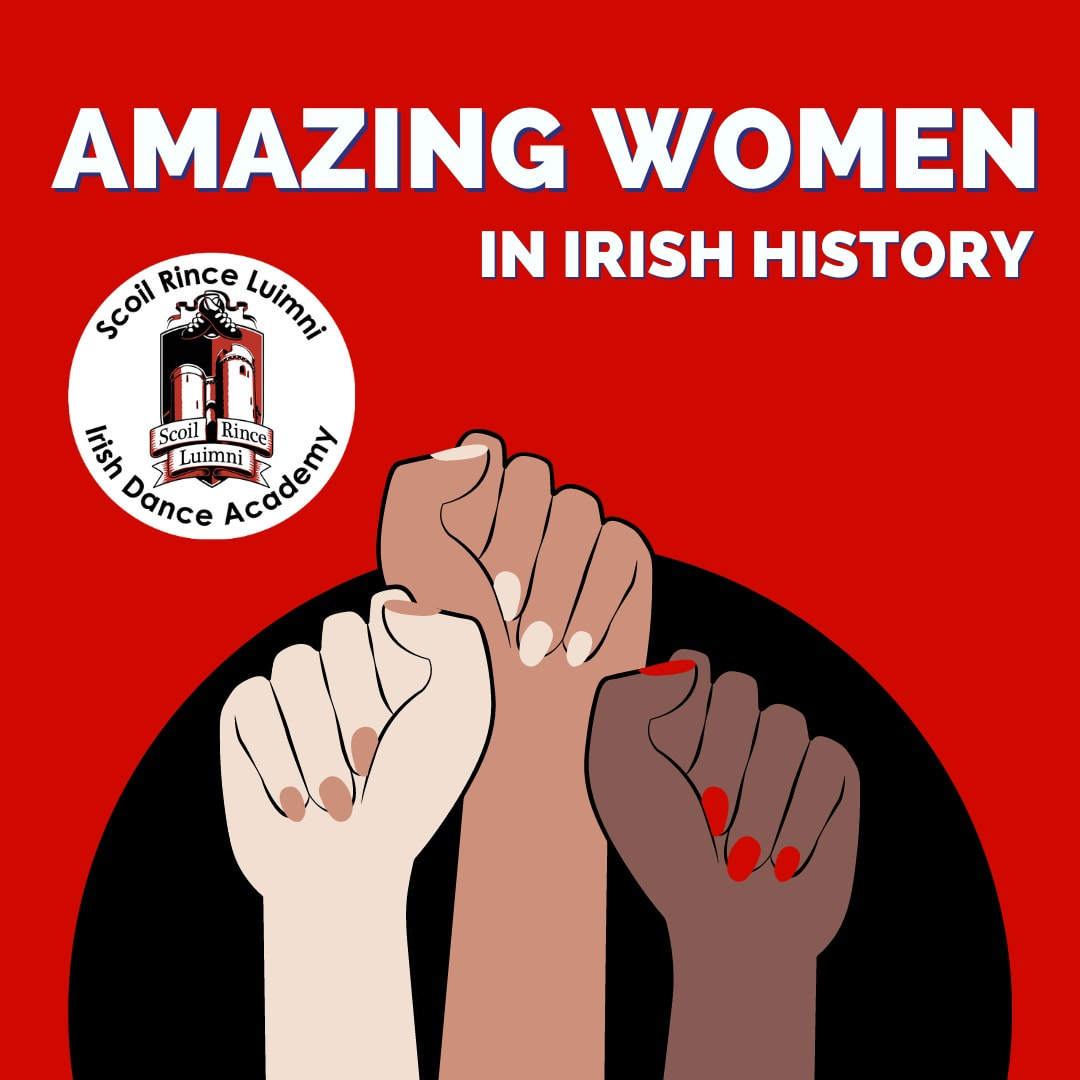
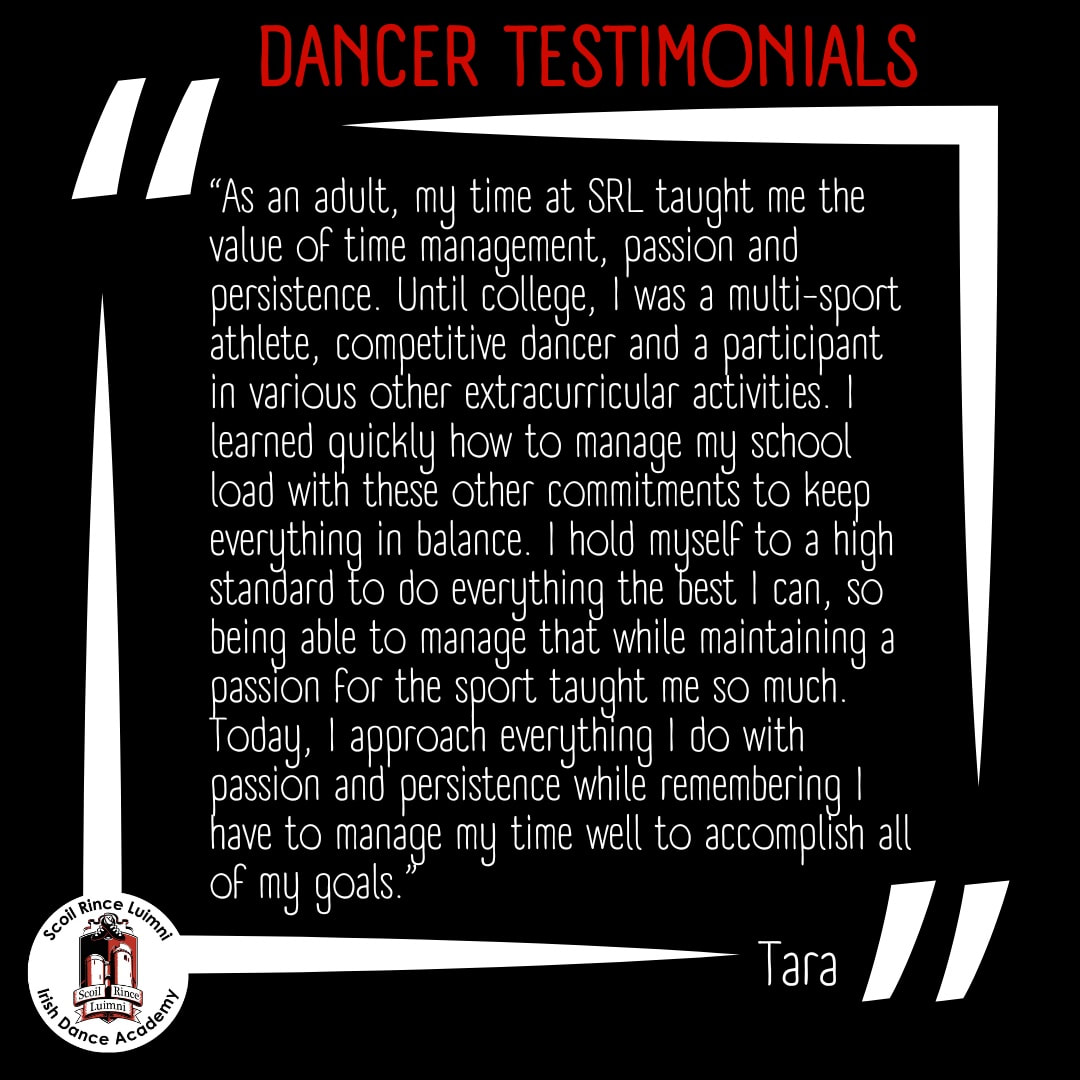

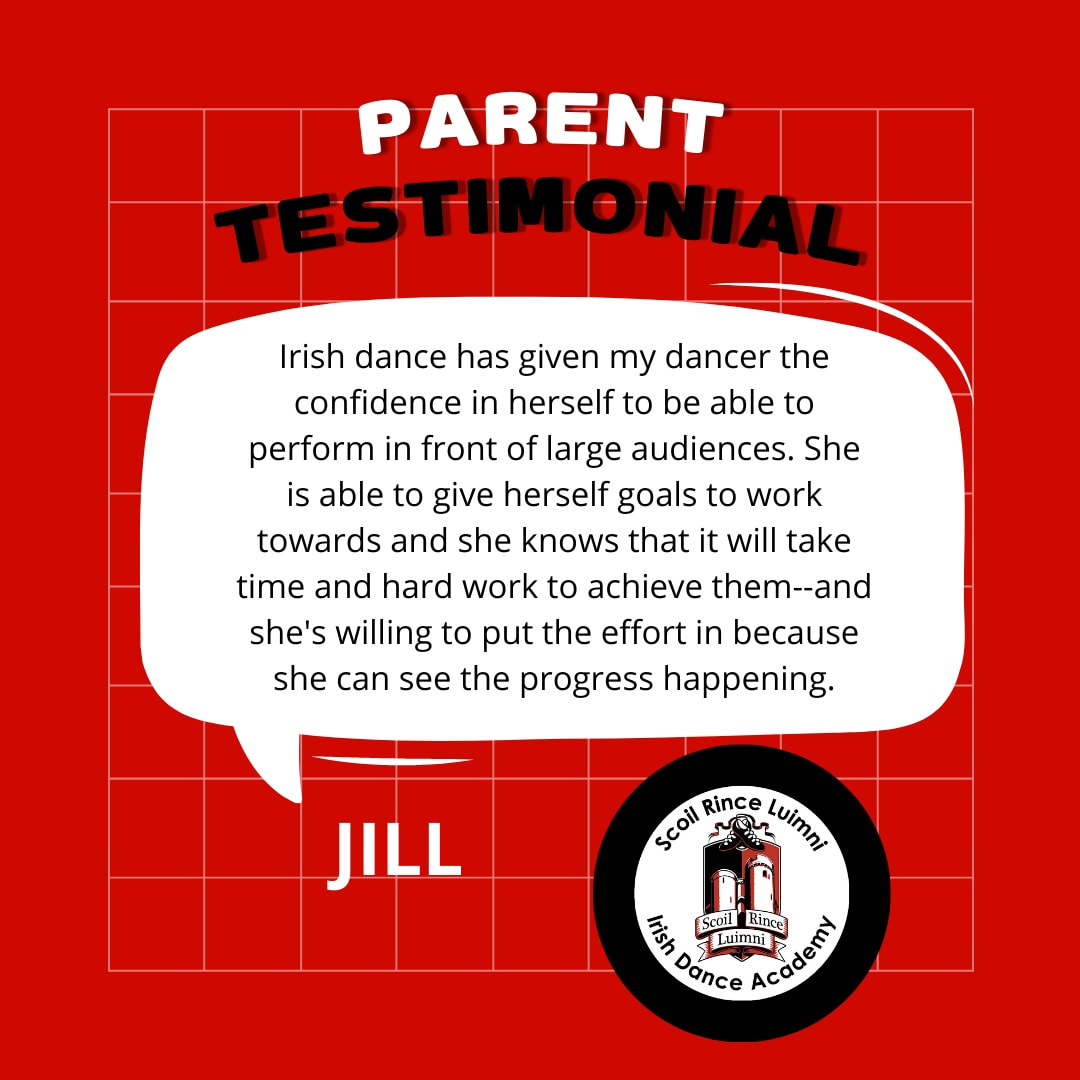
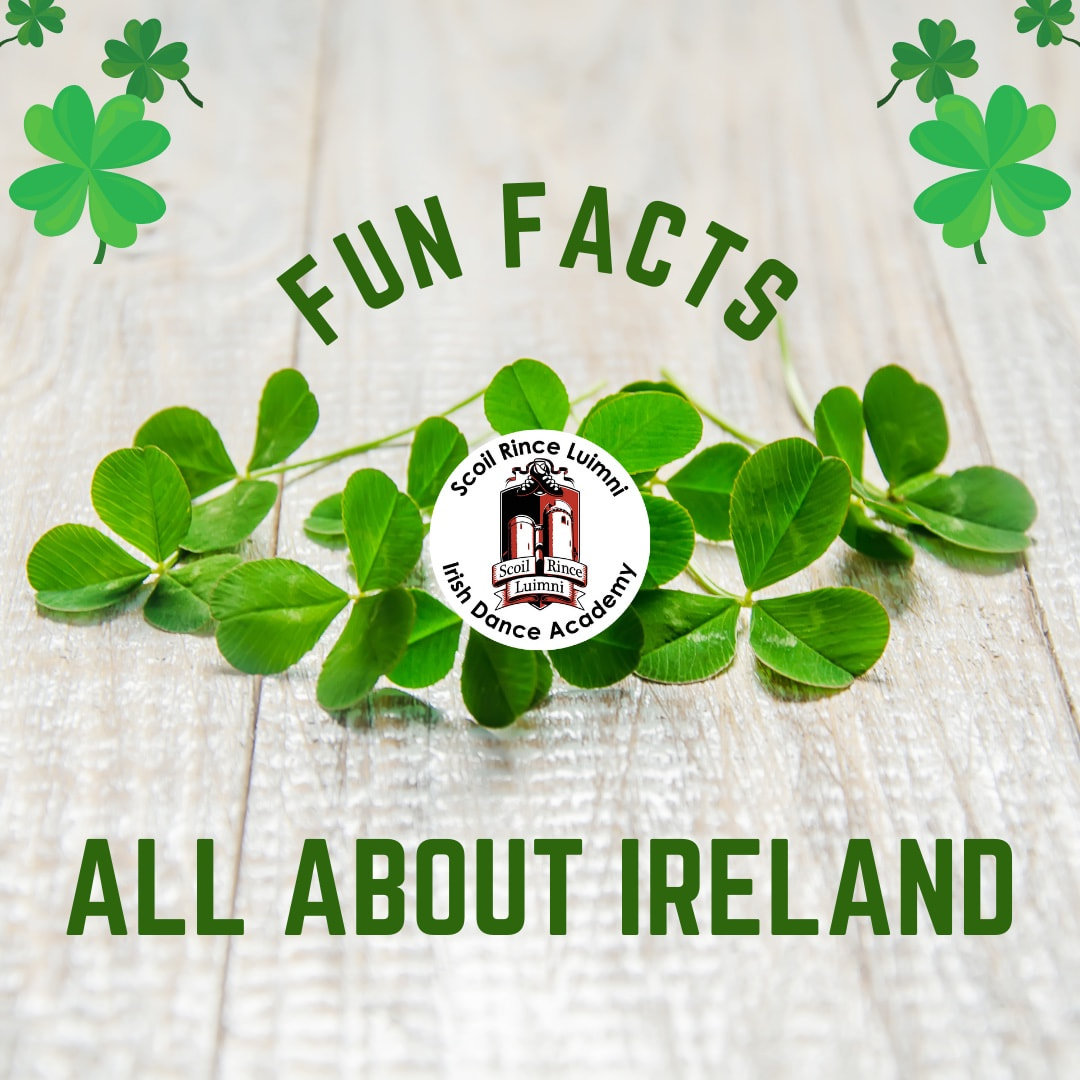
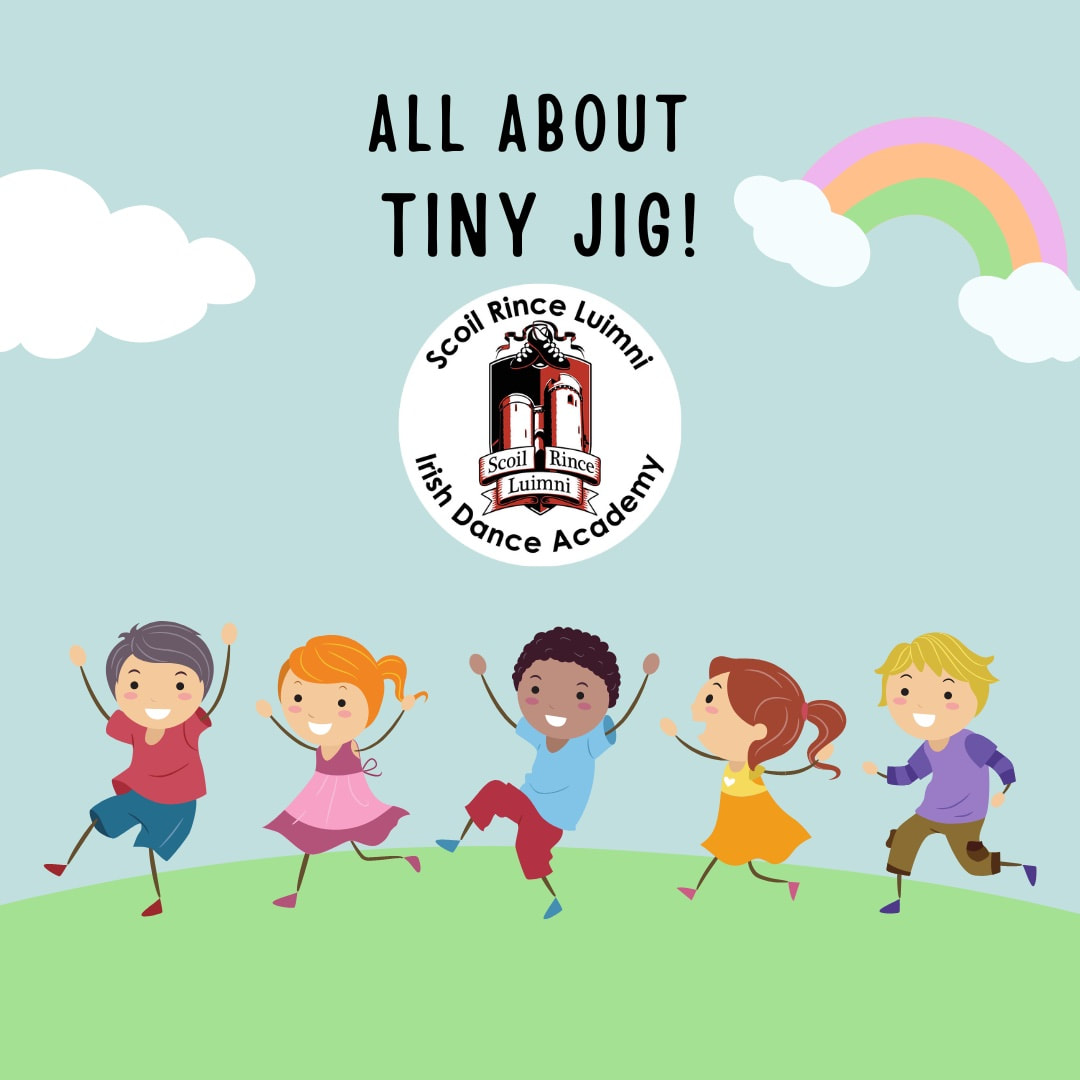
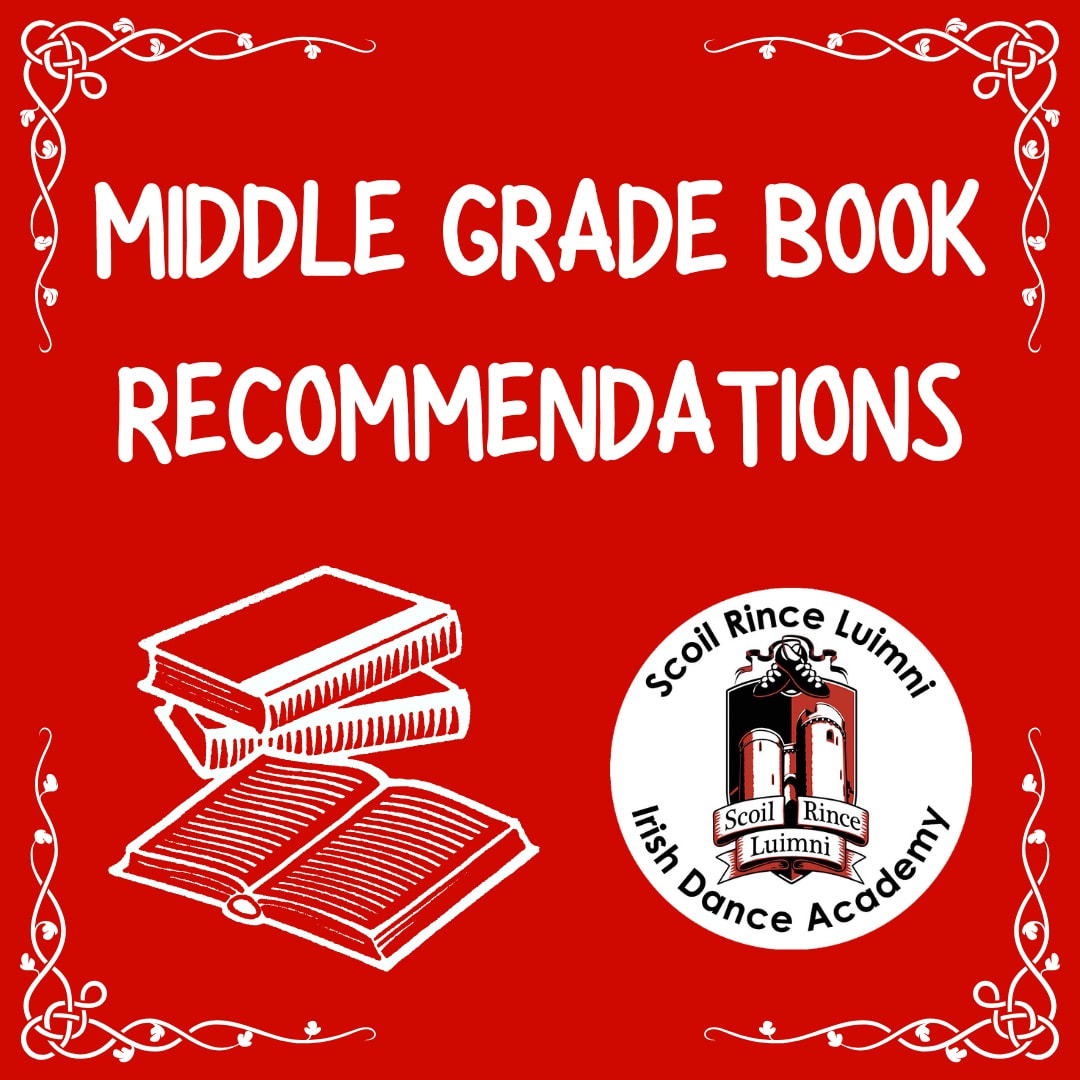
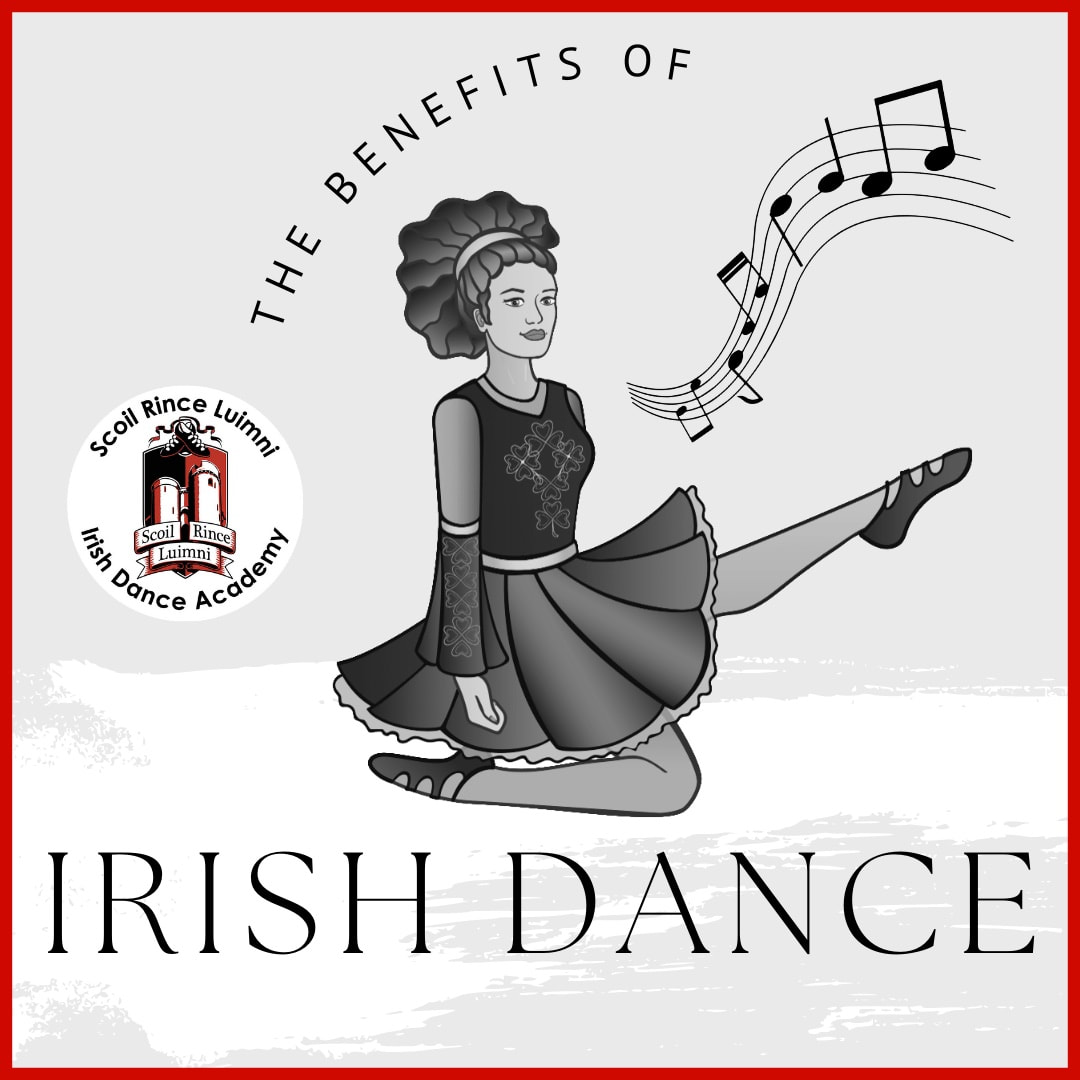
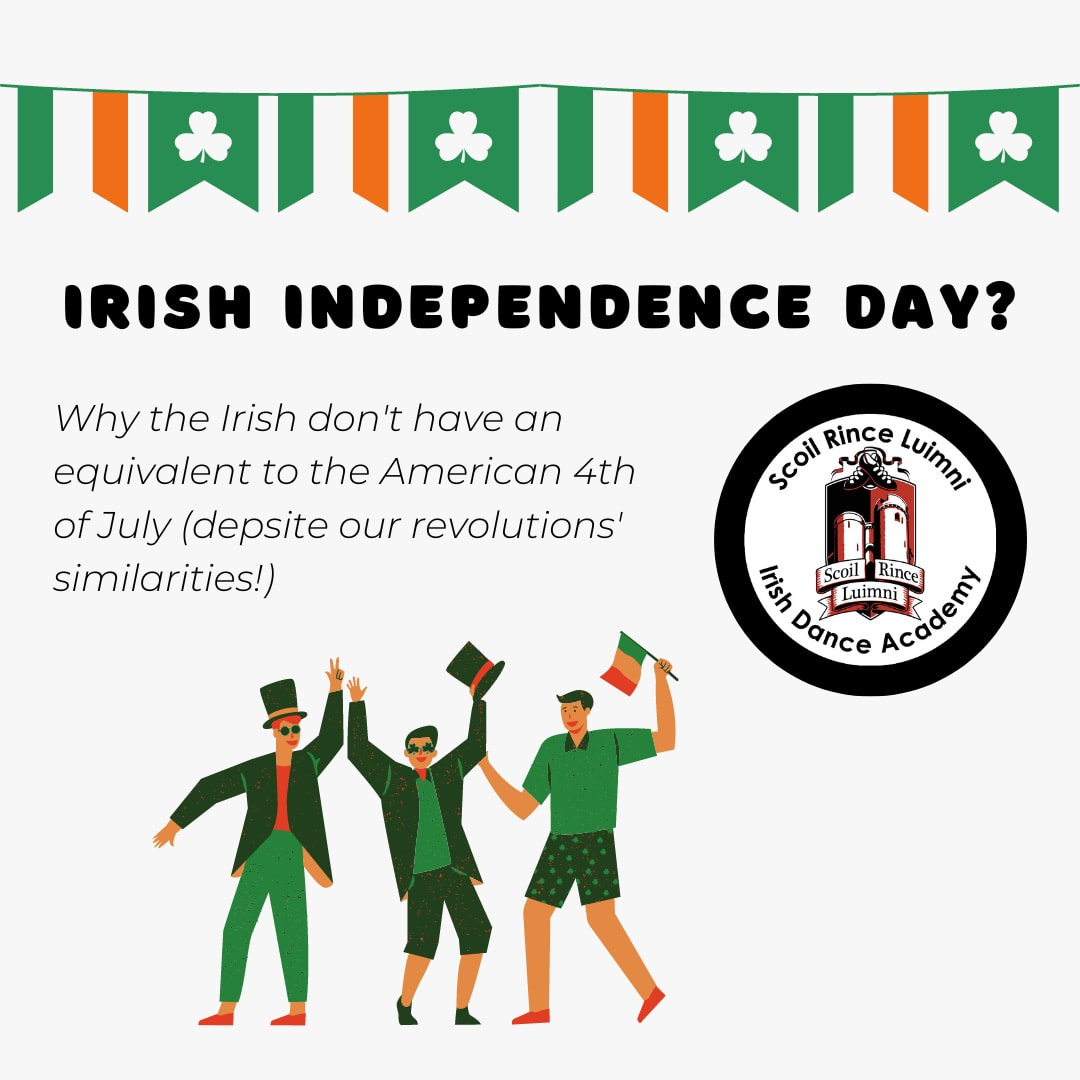
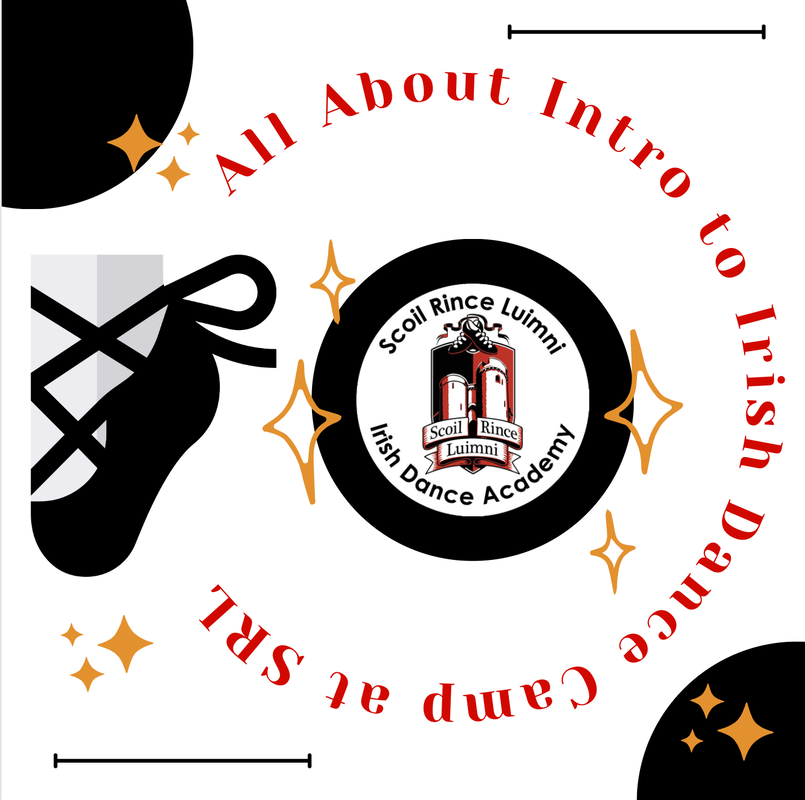
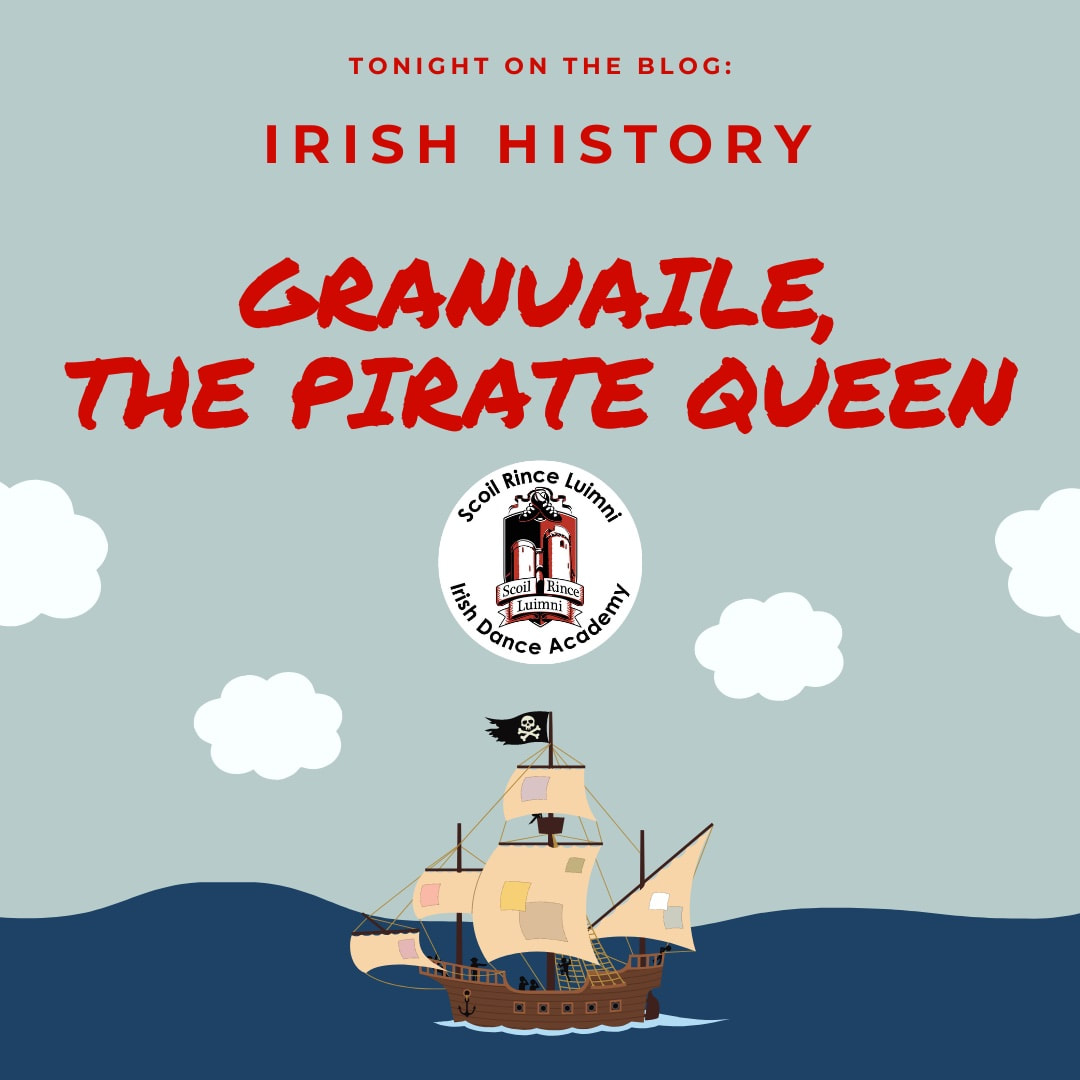
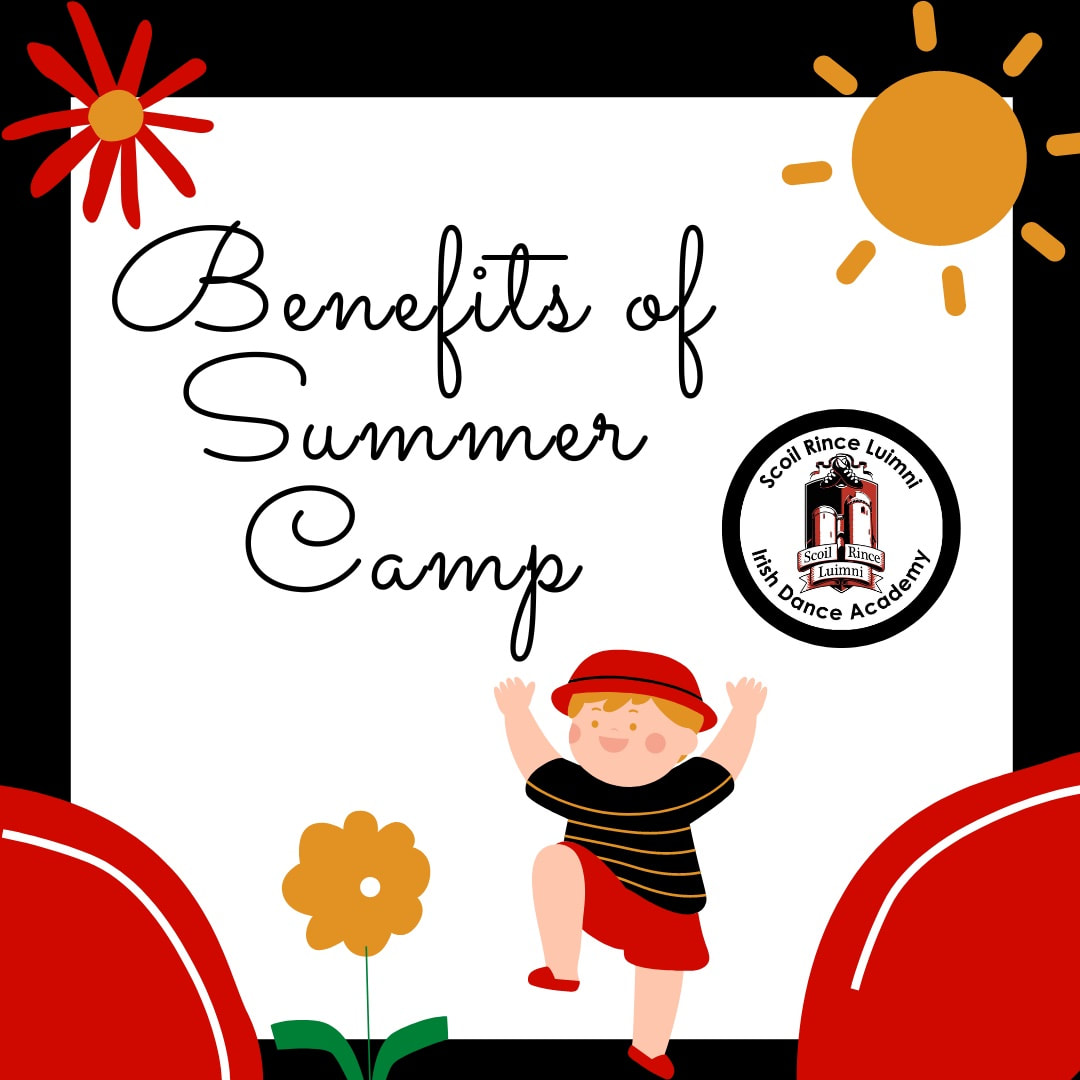
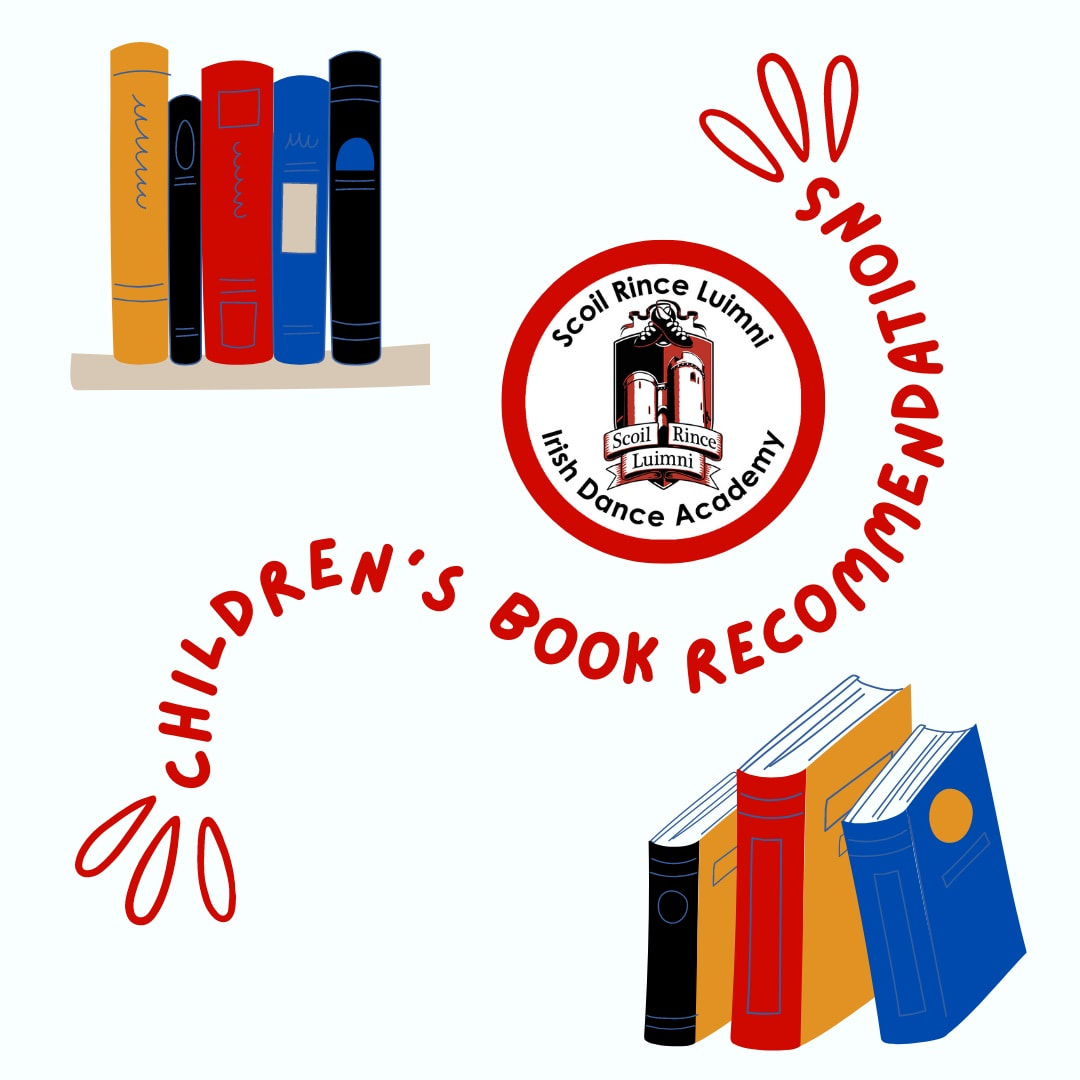
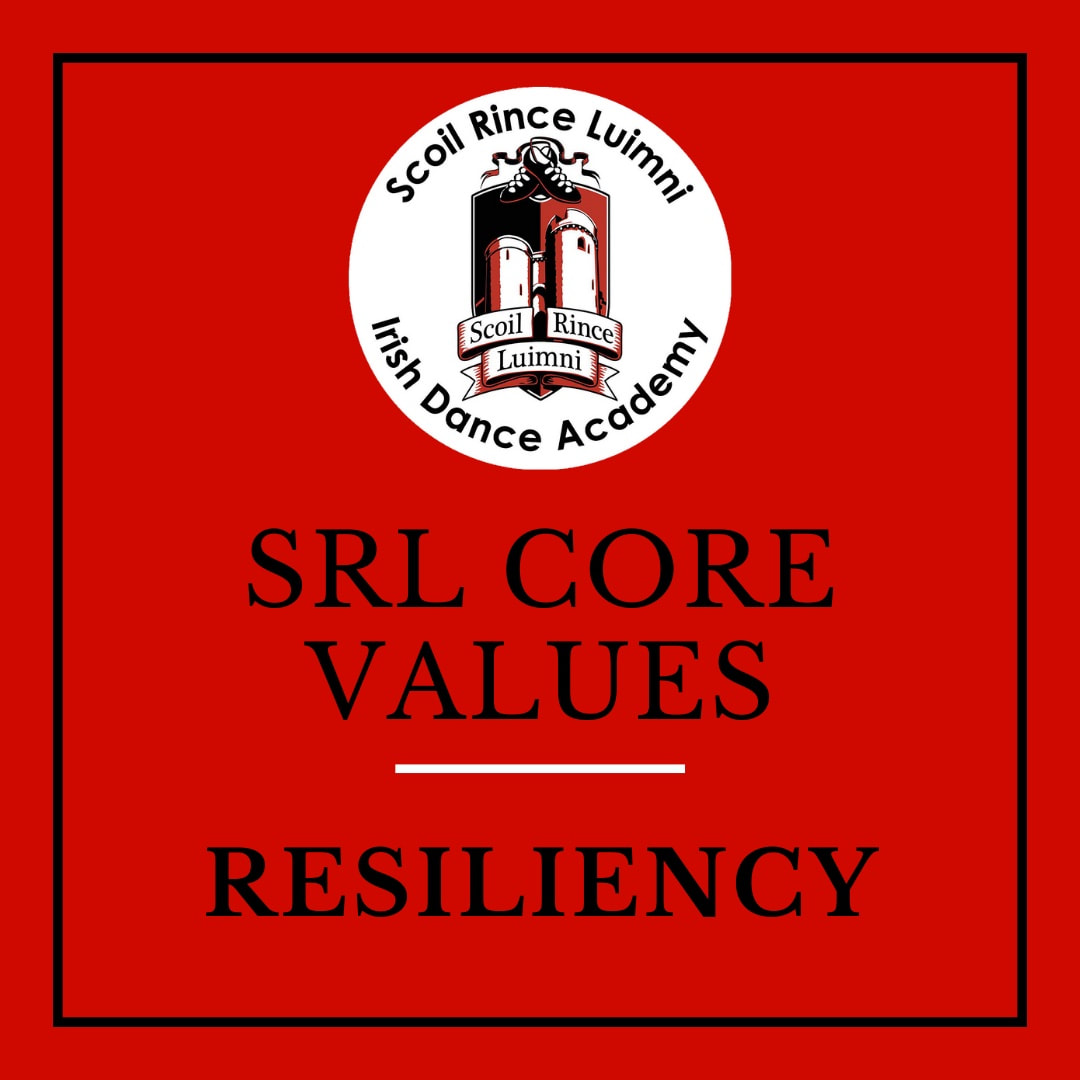

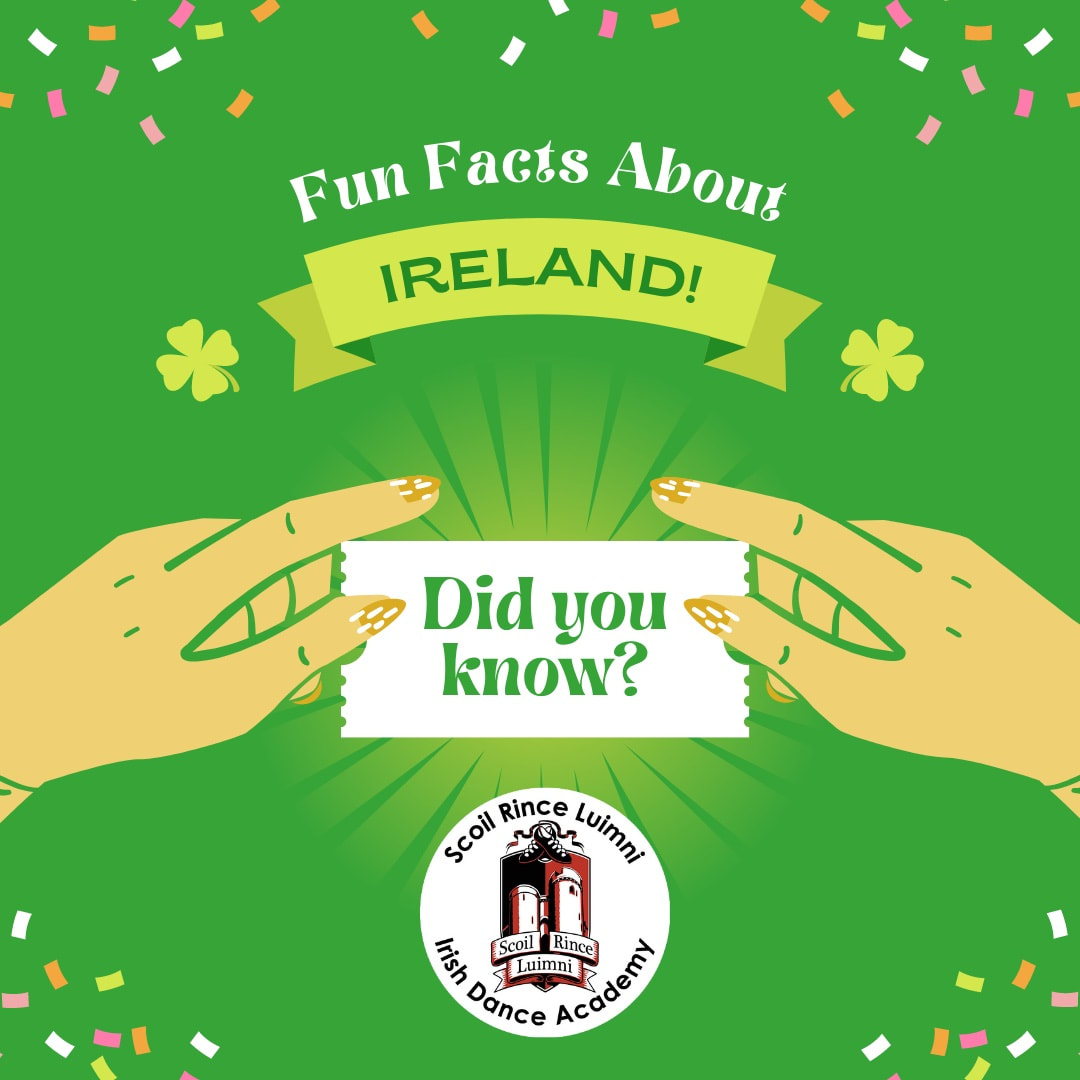
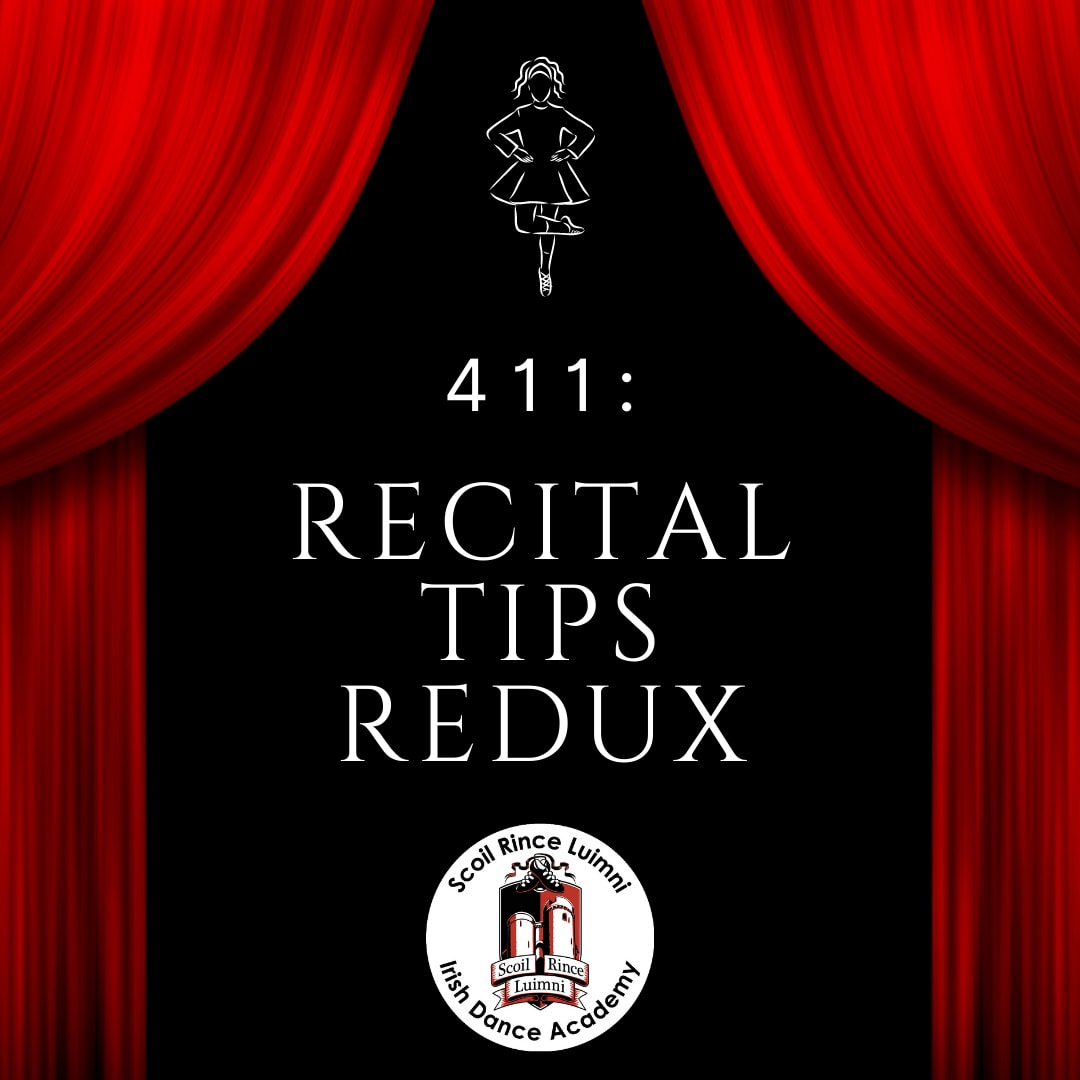
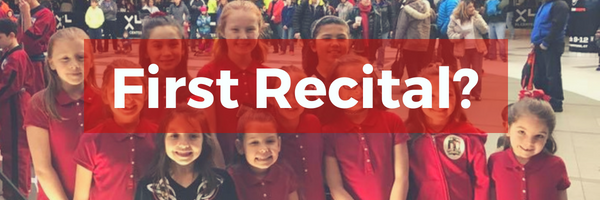
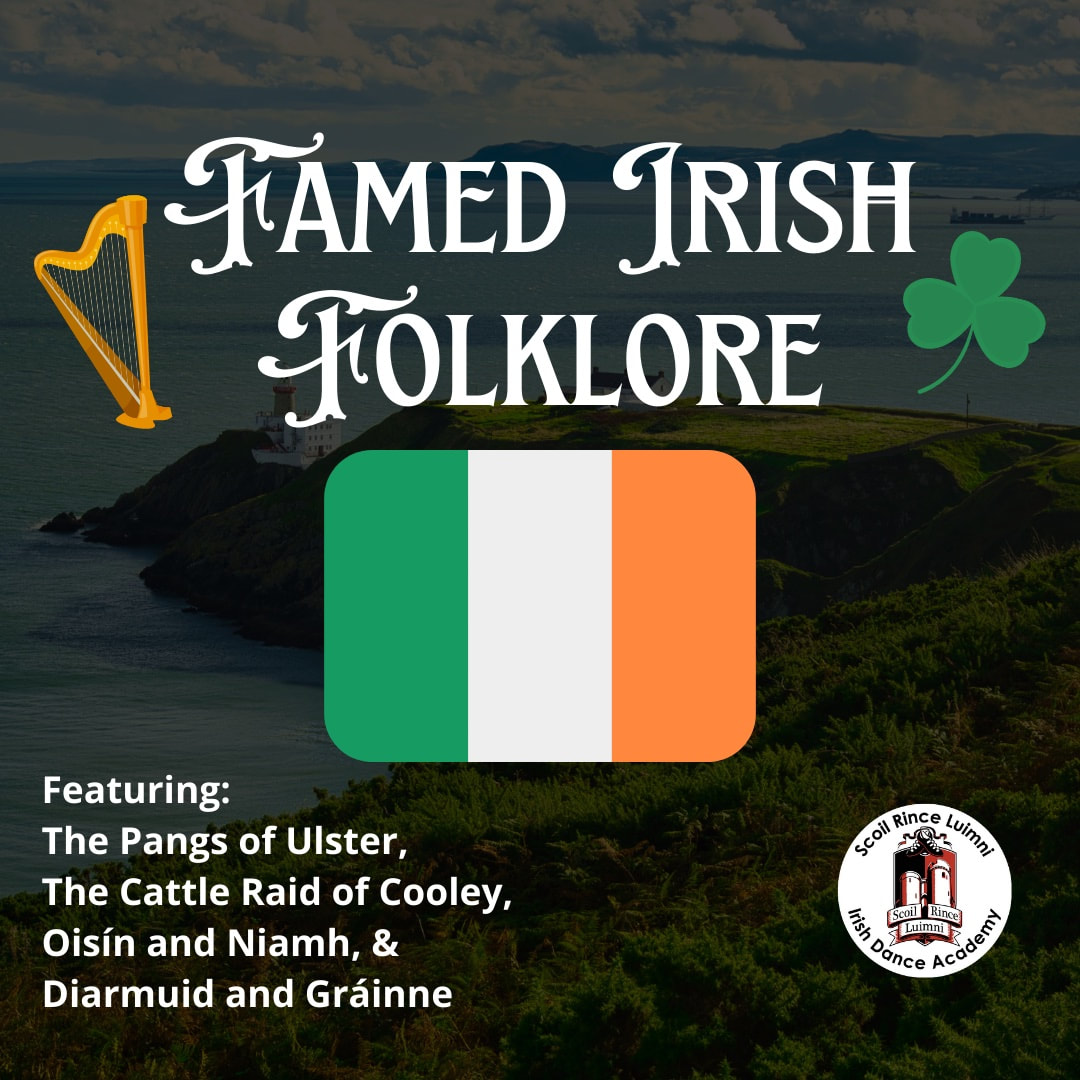
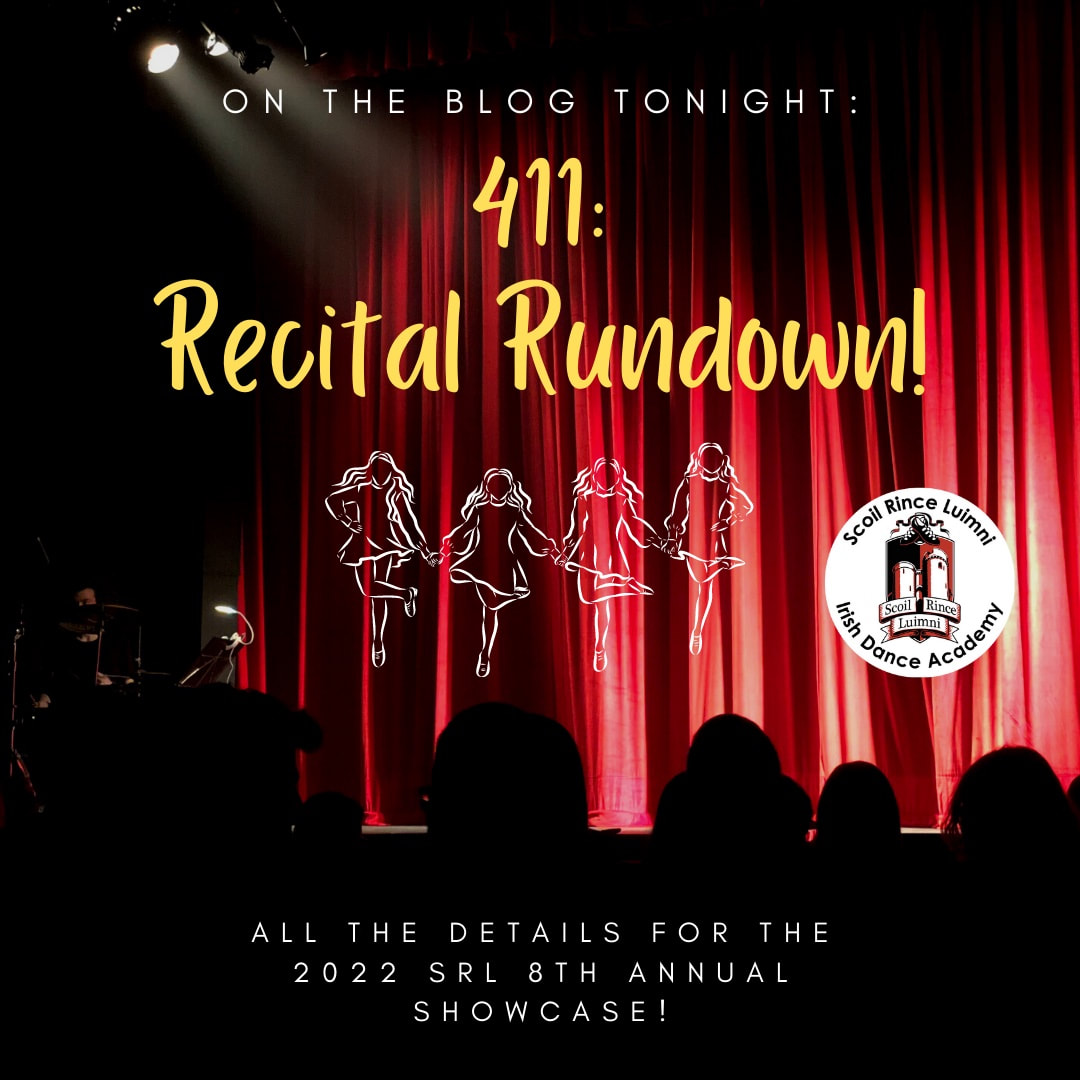
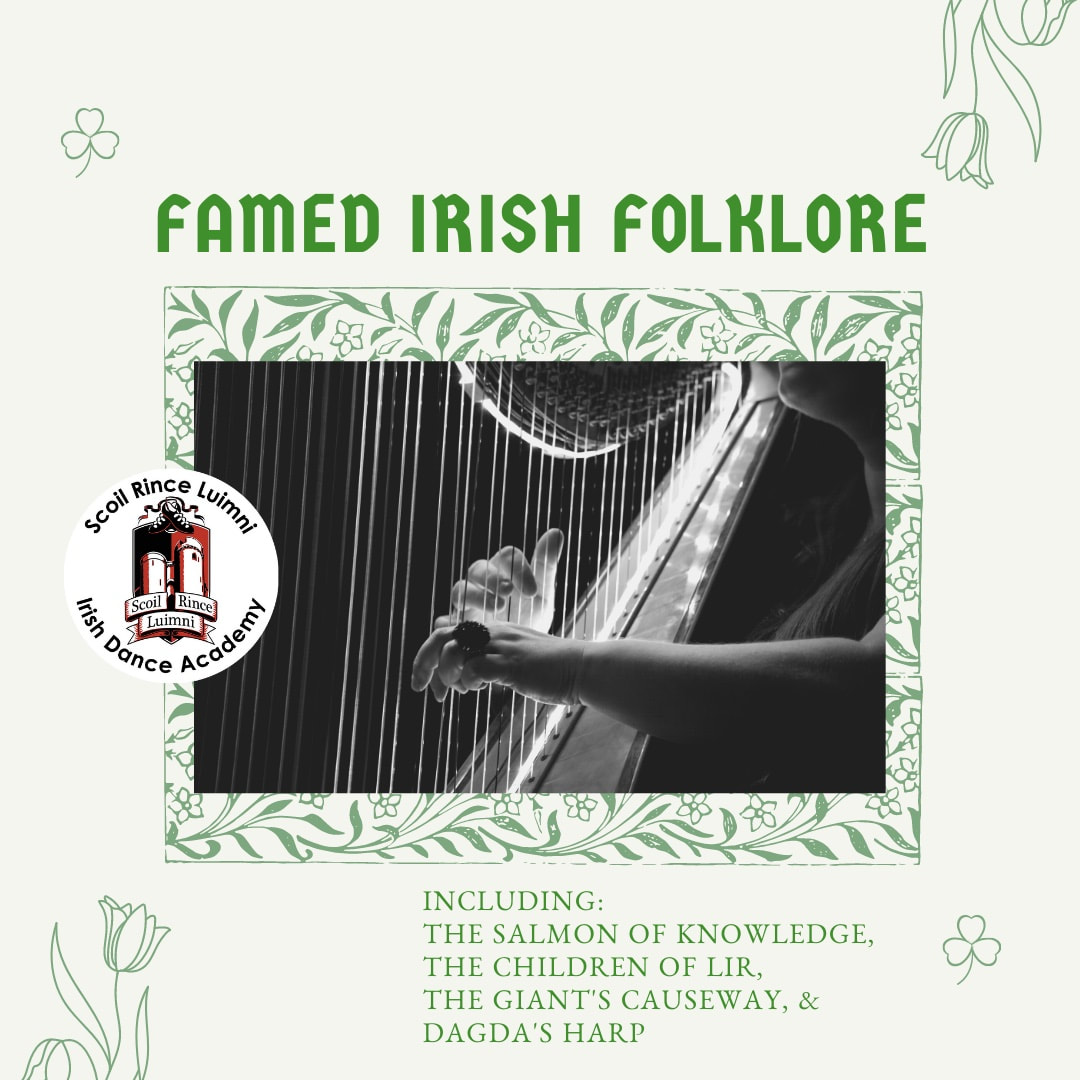
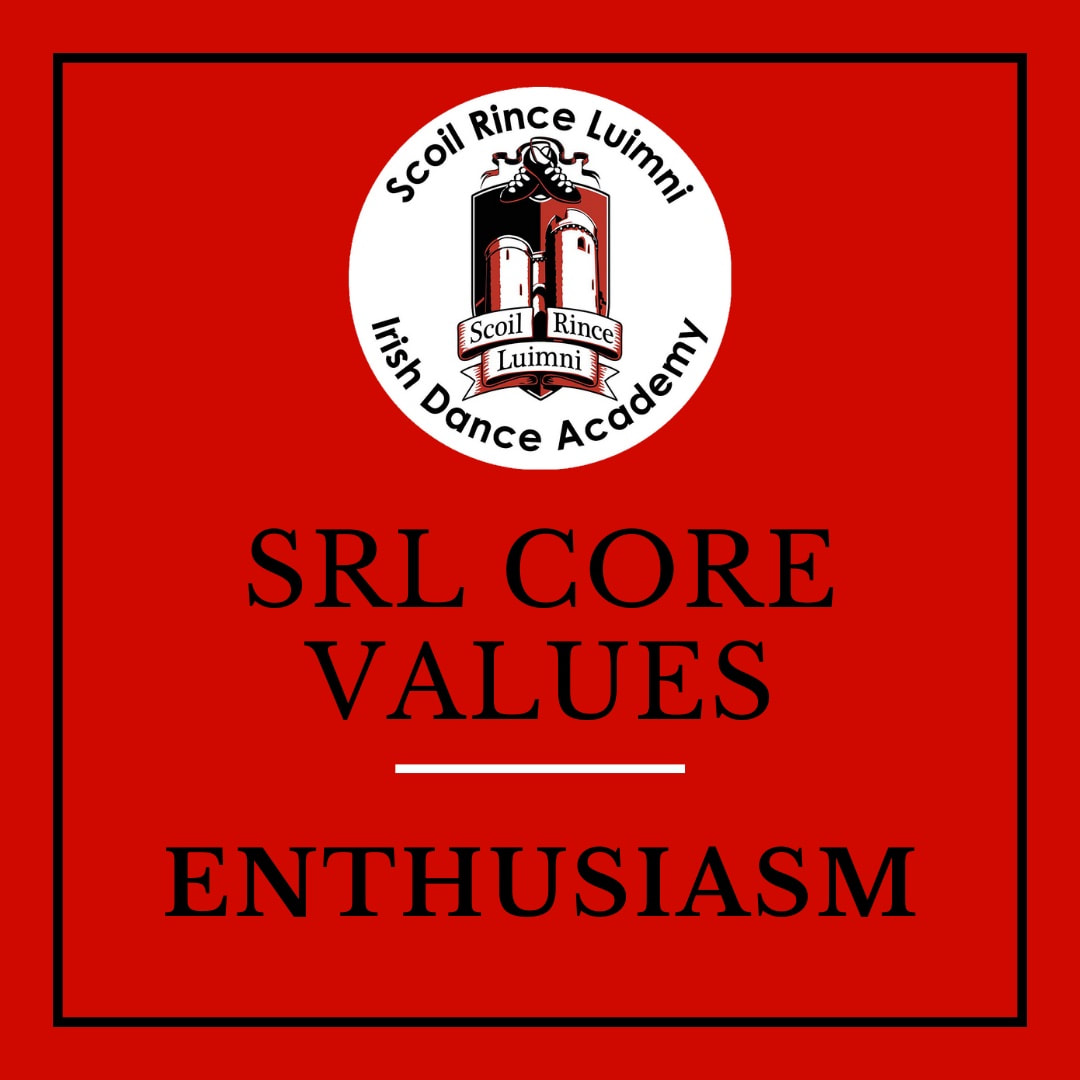
 RSS Feed
RSS Feed